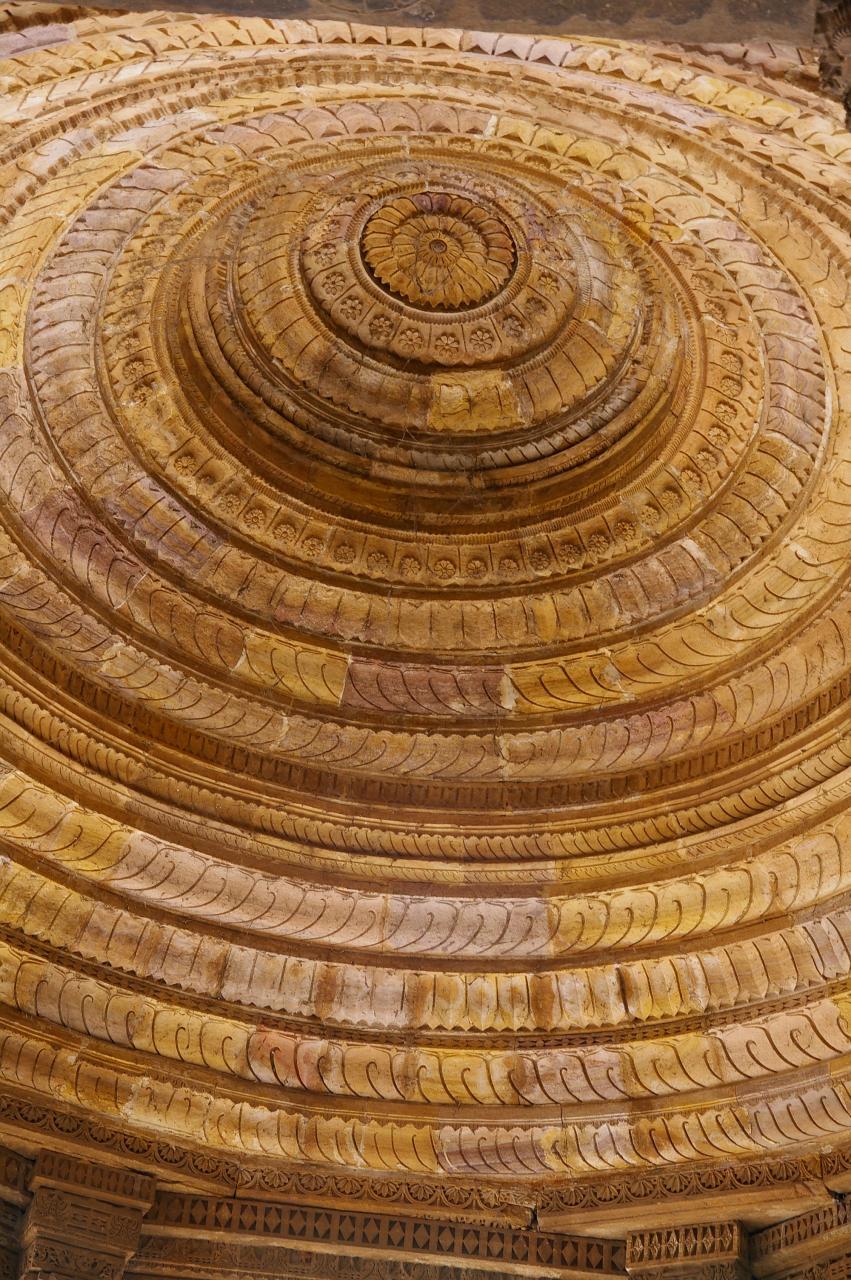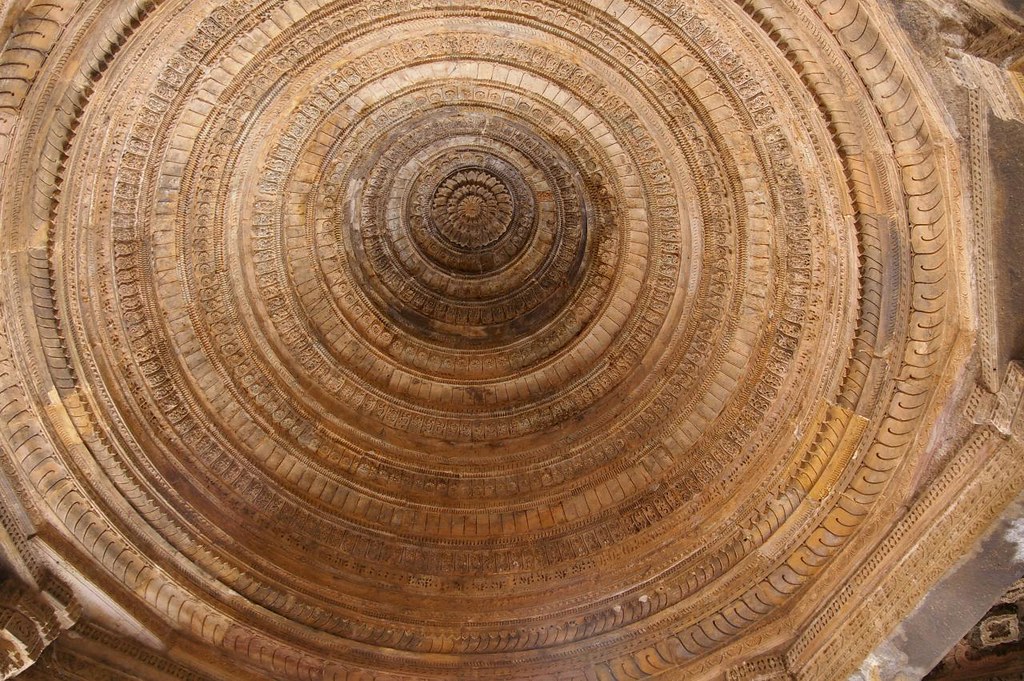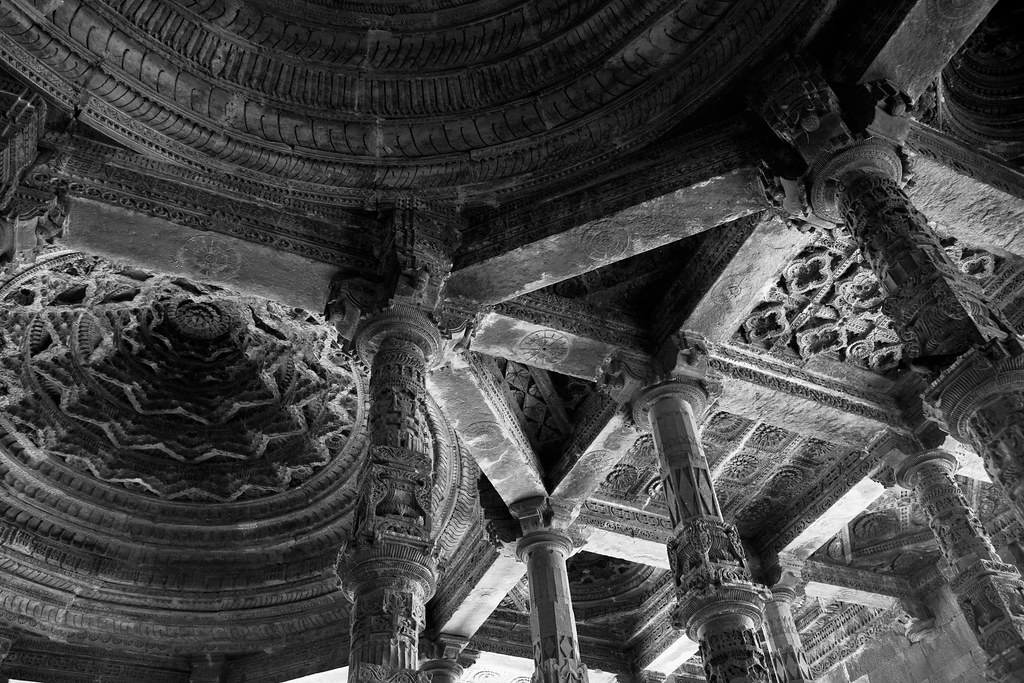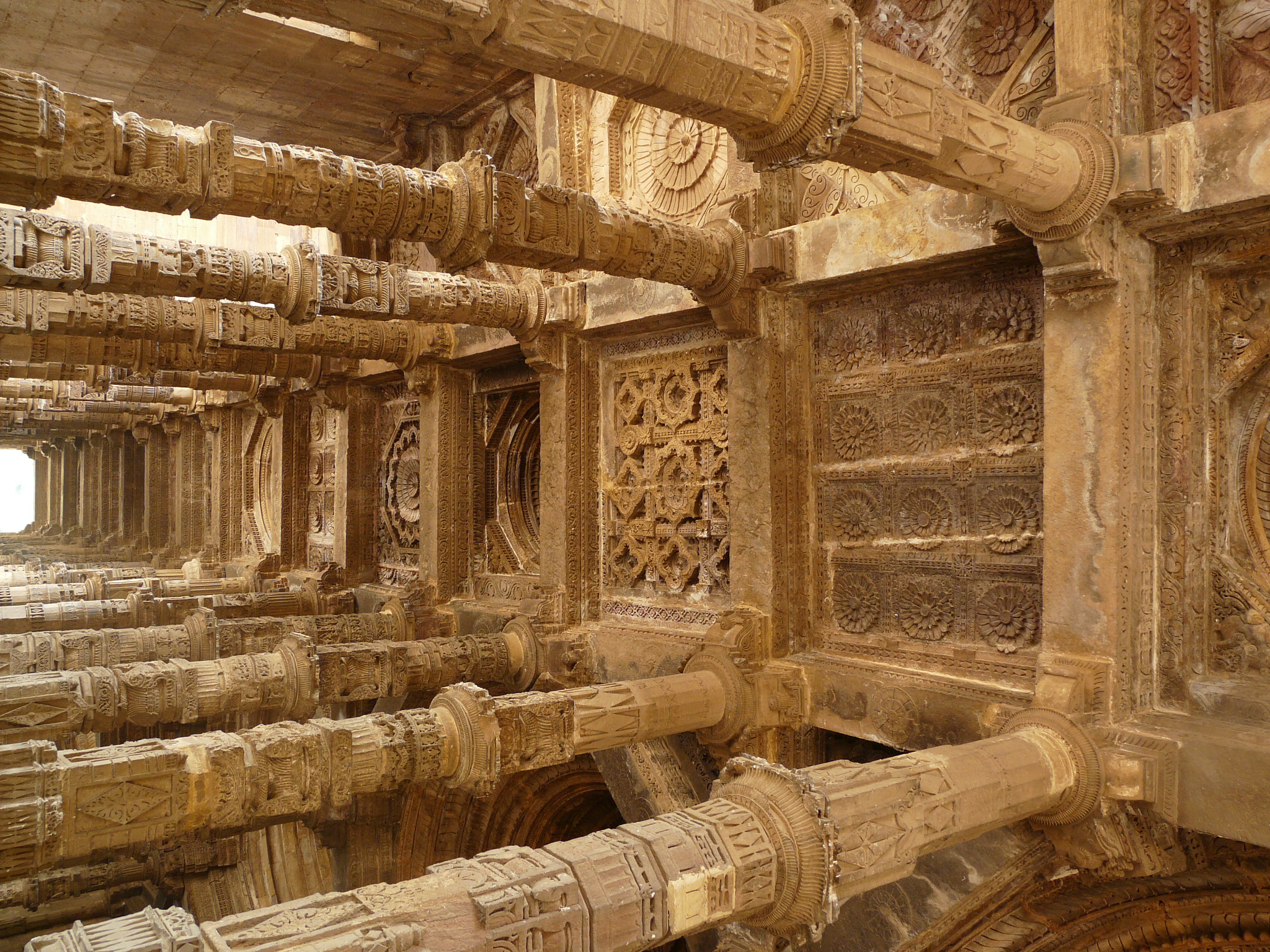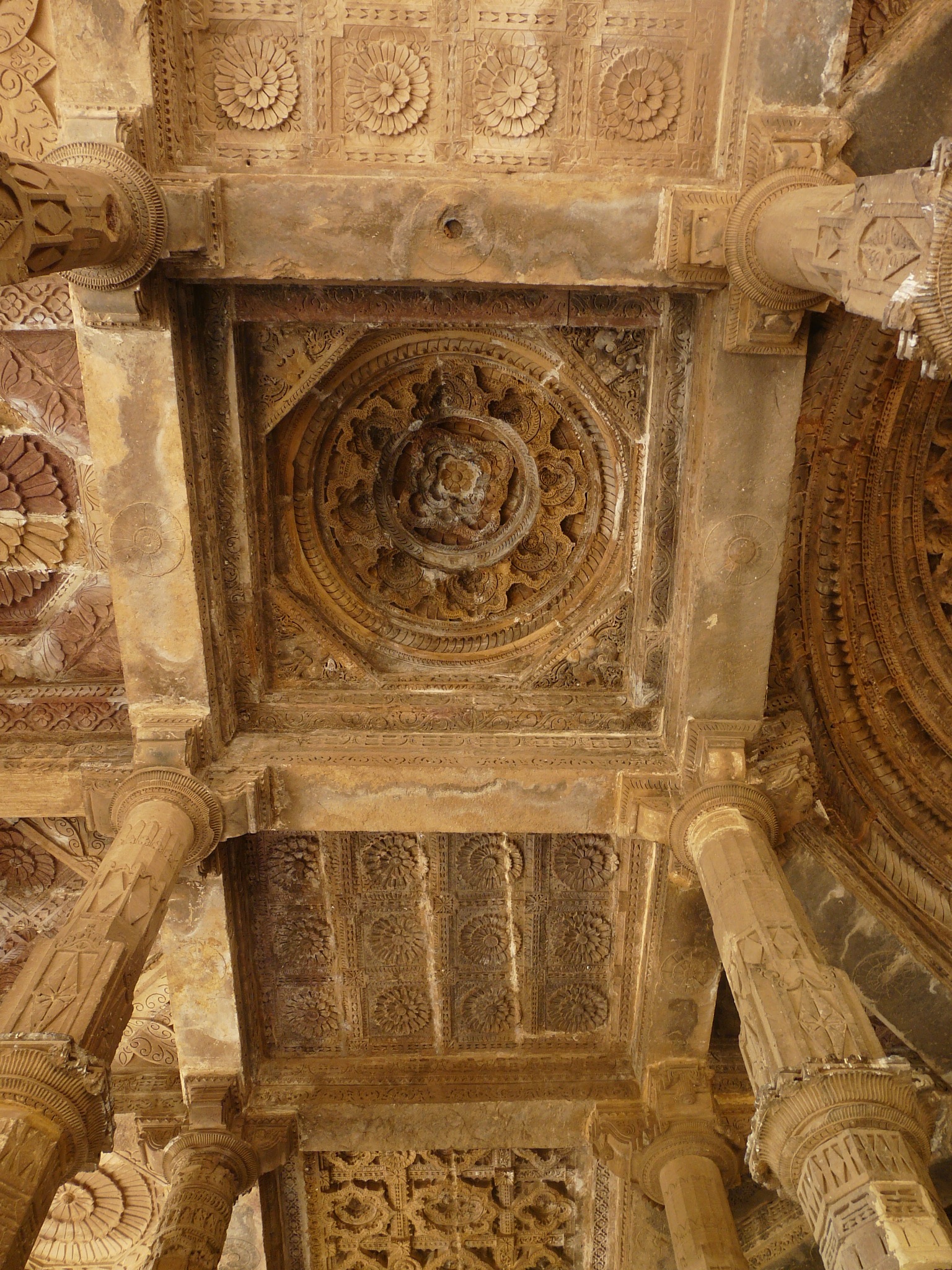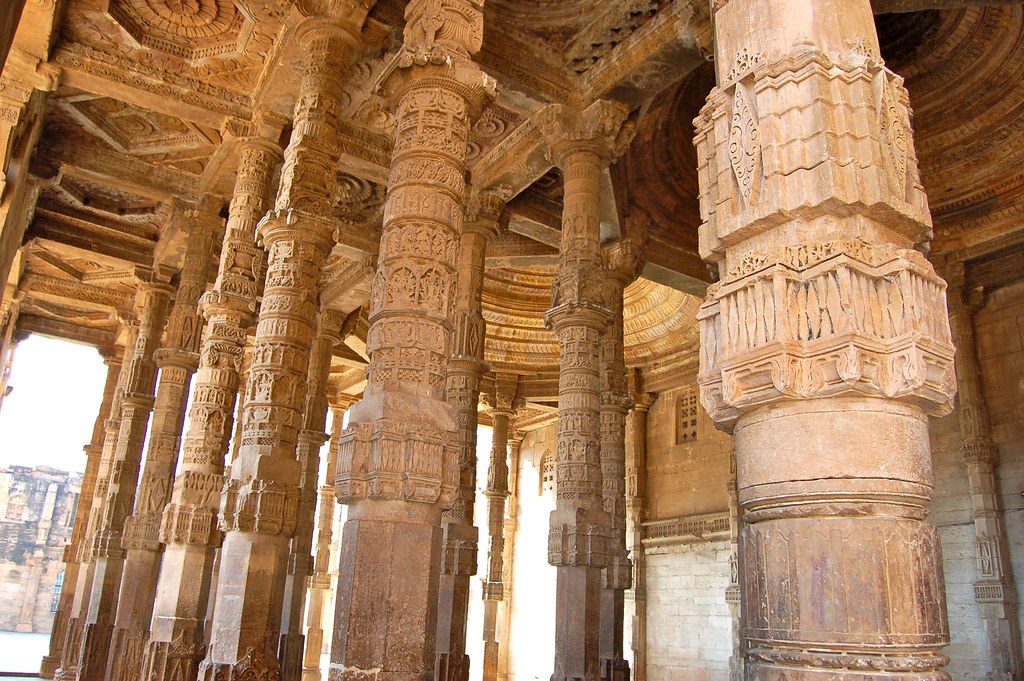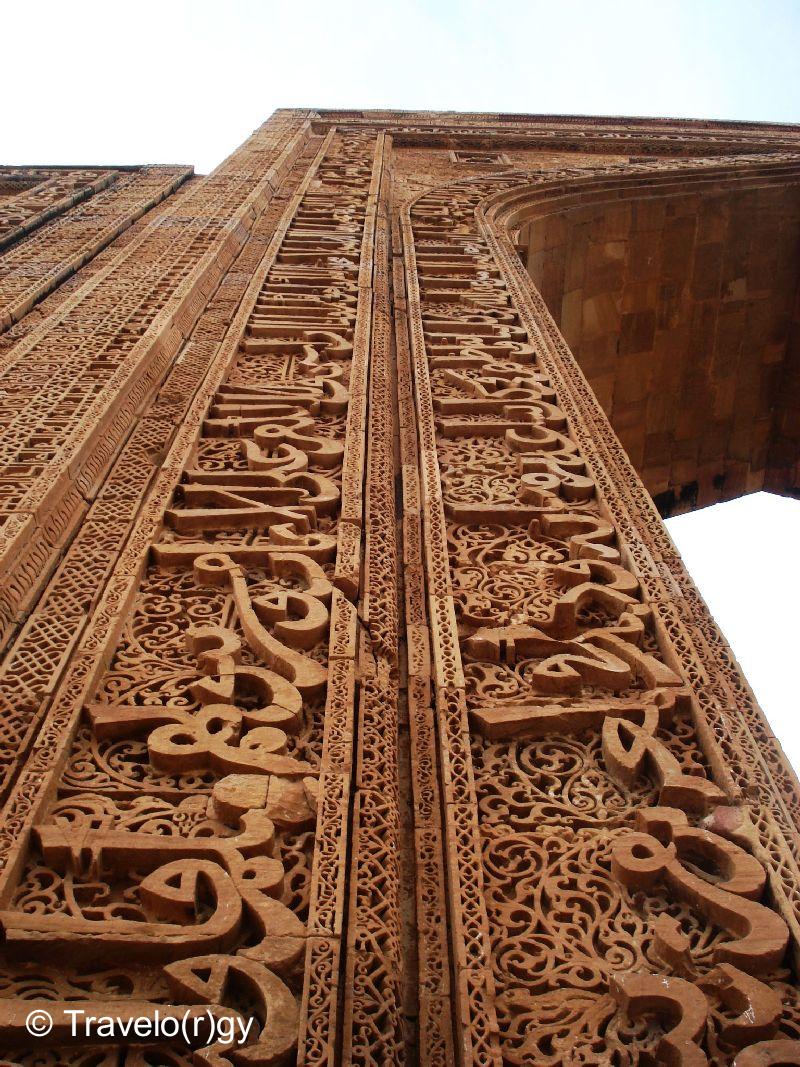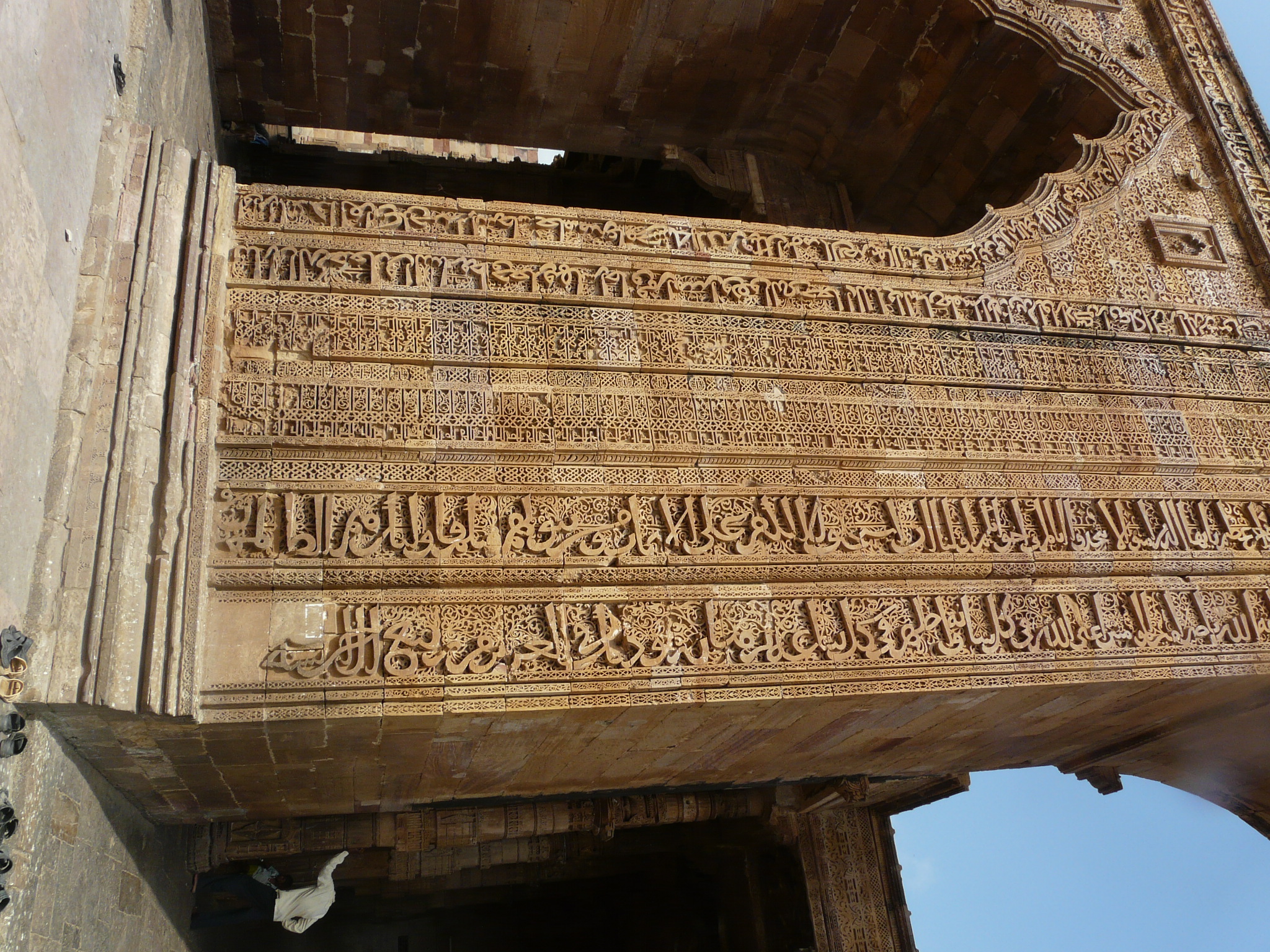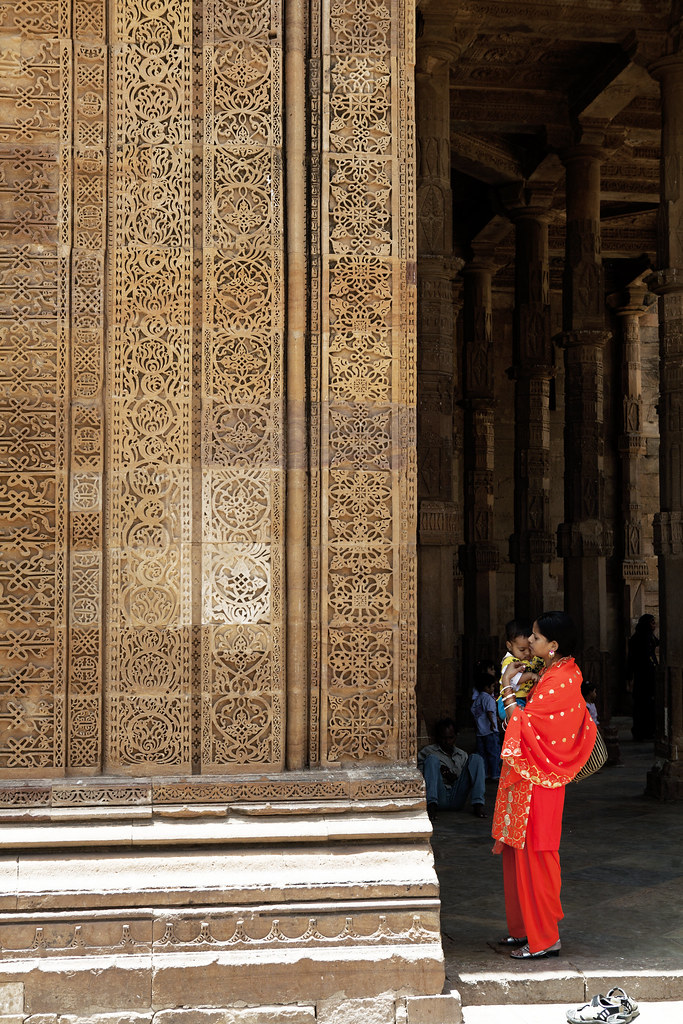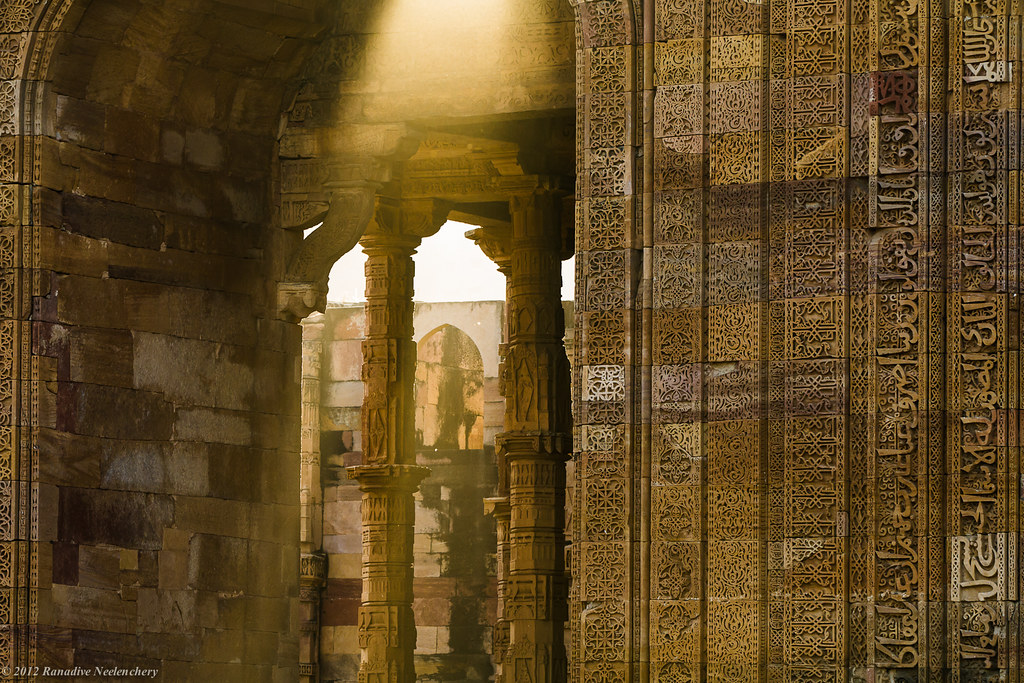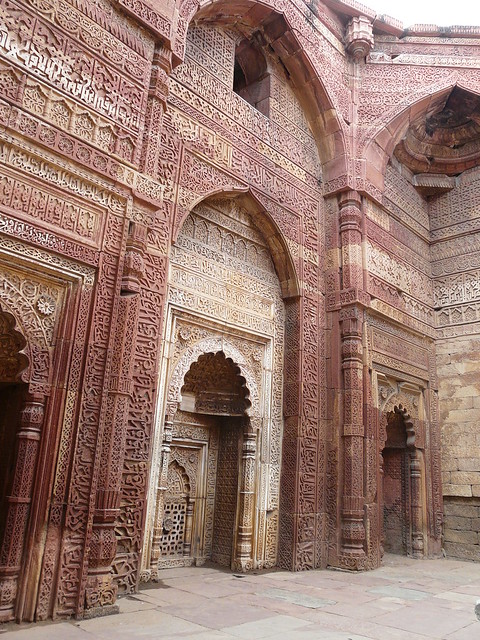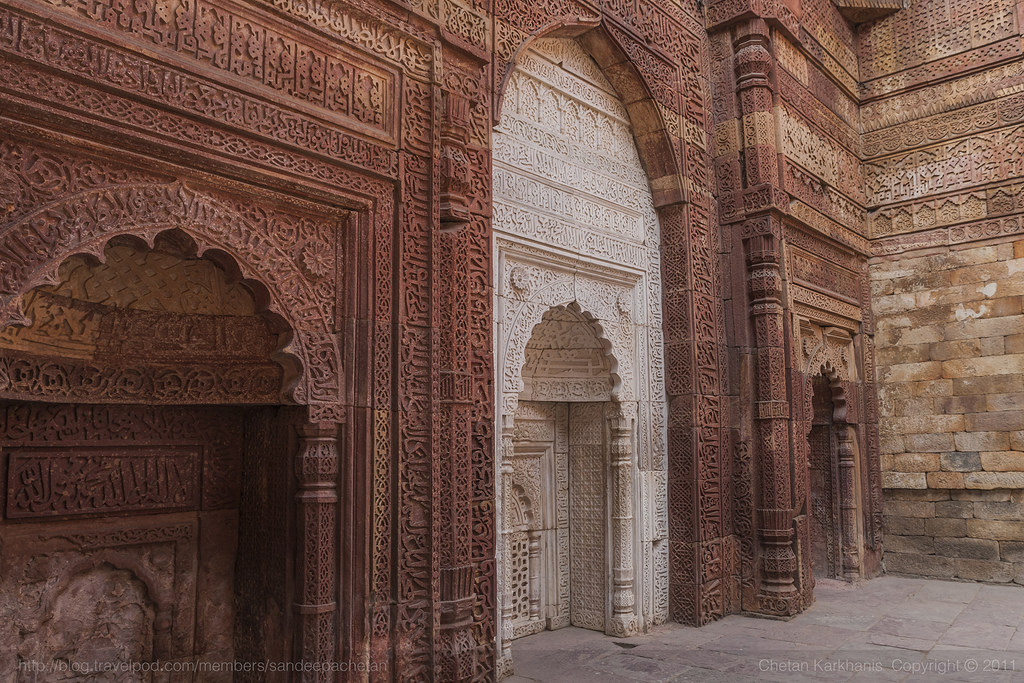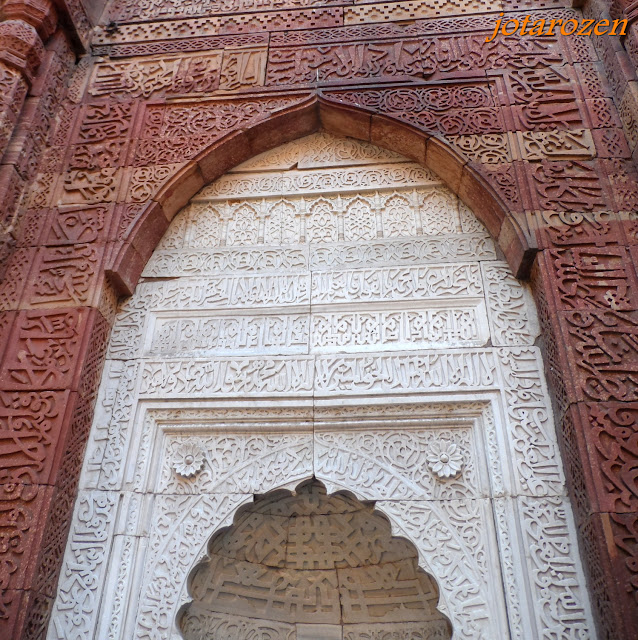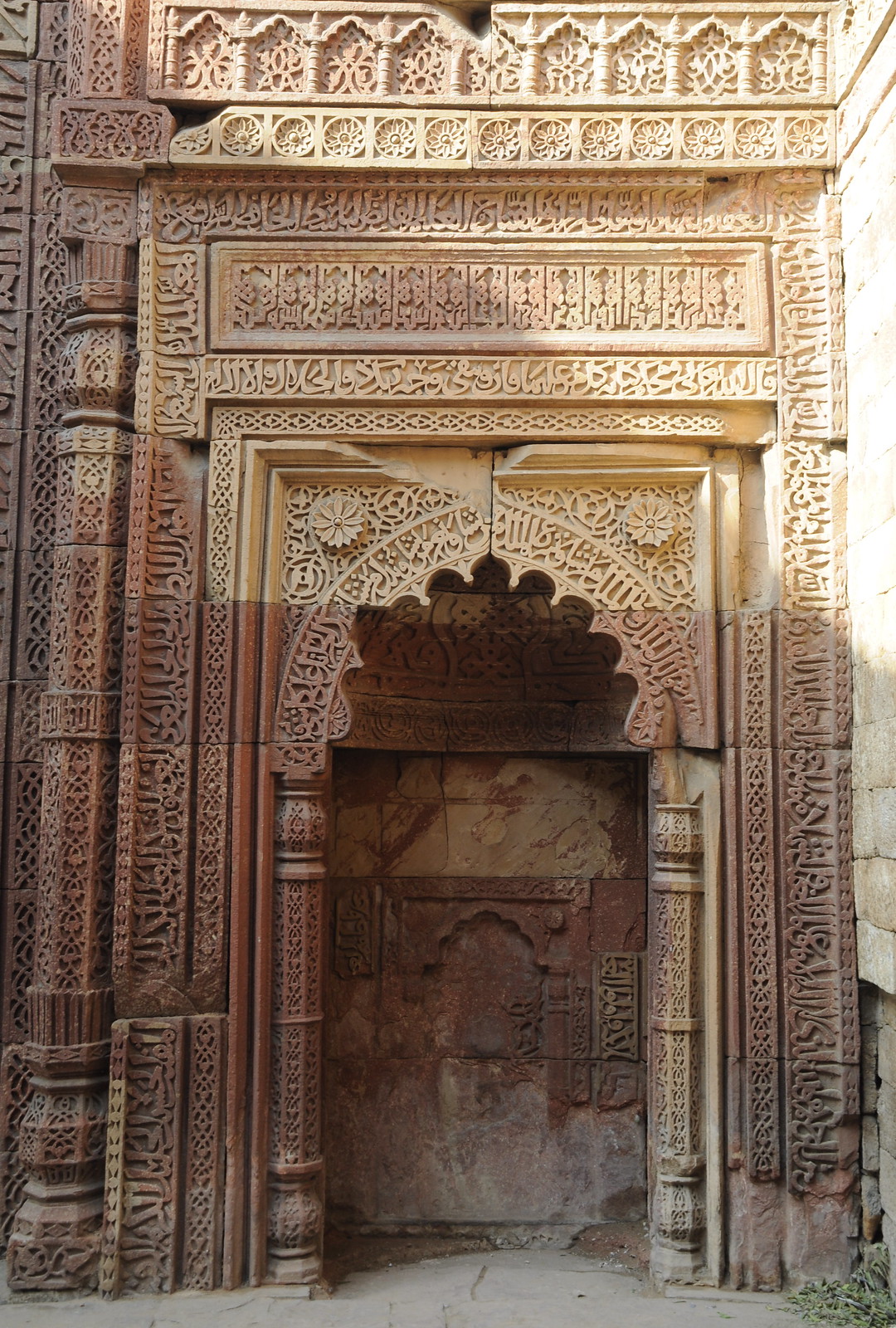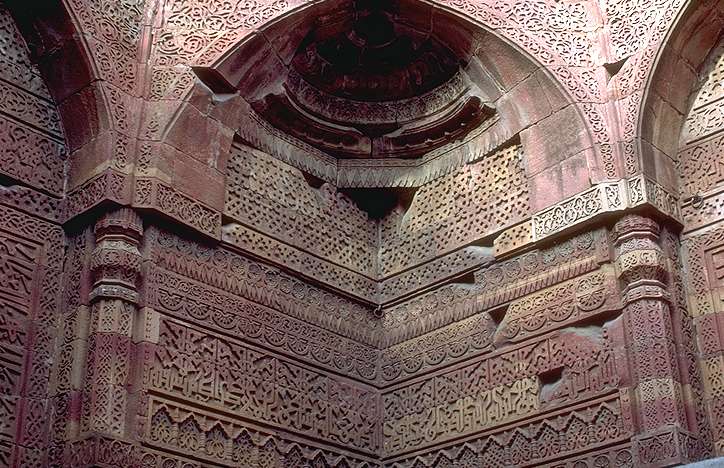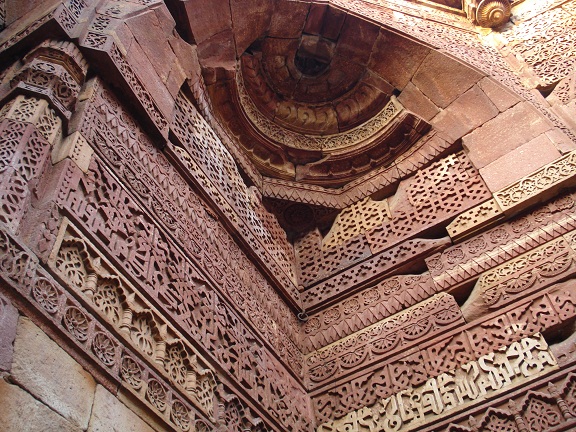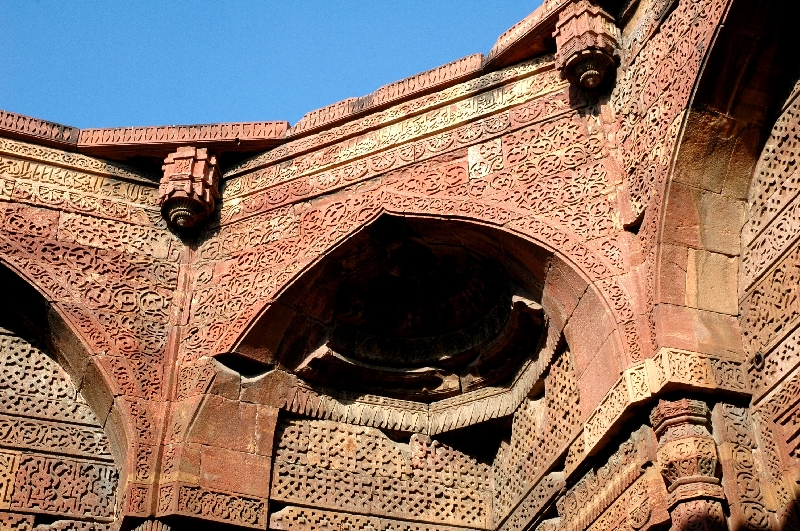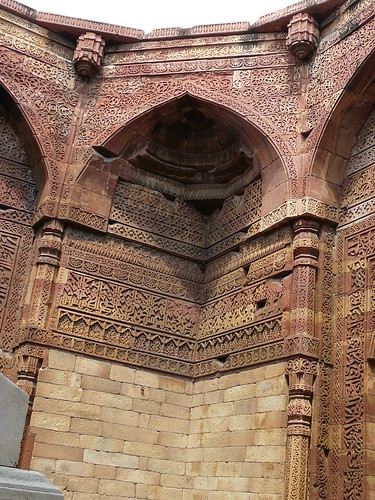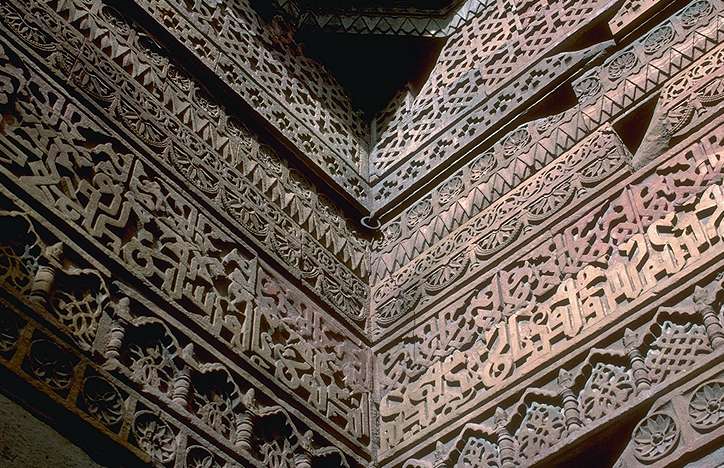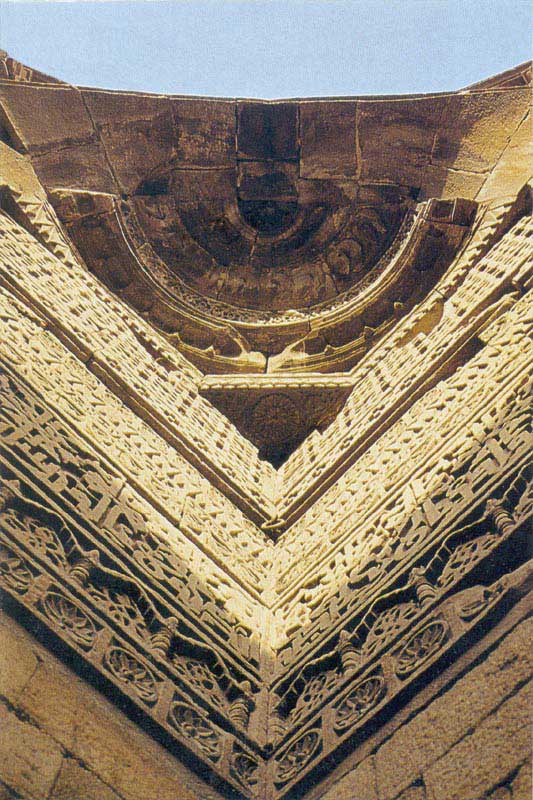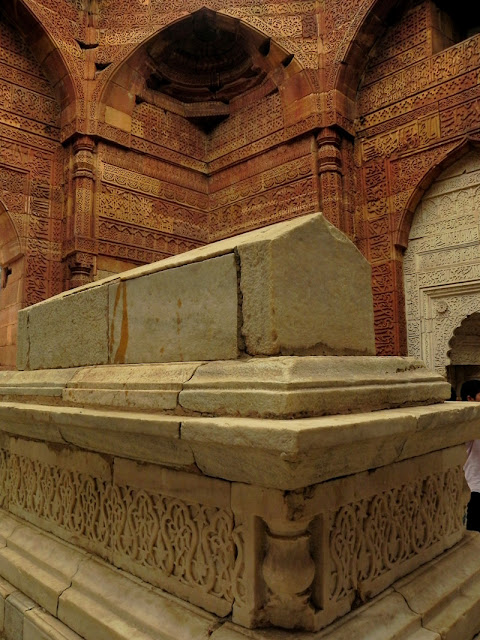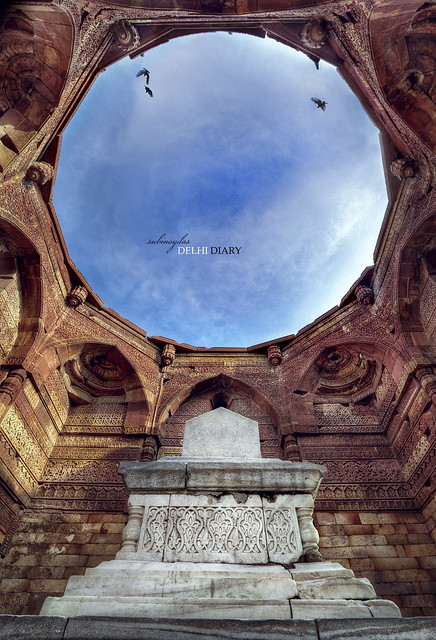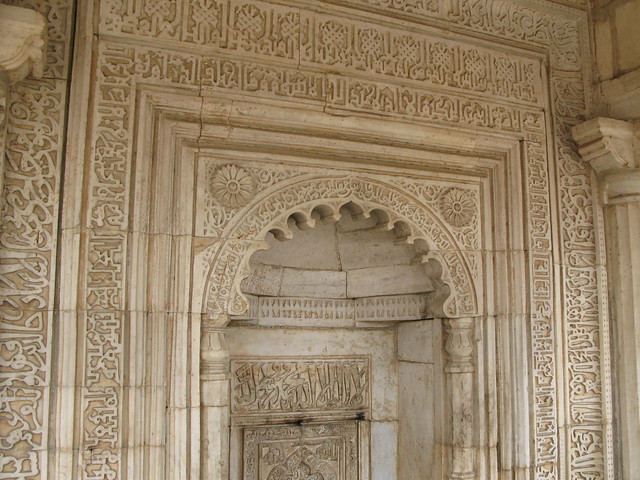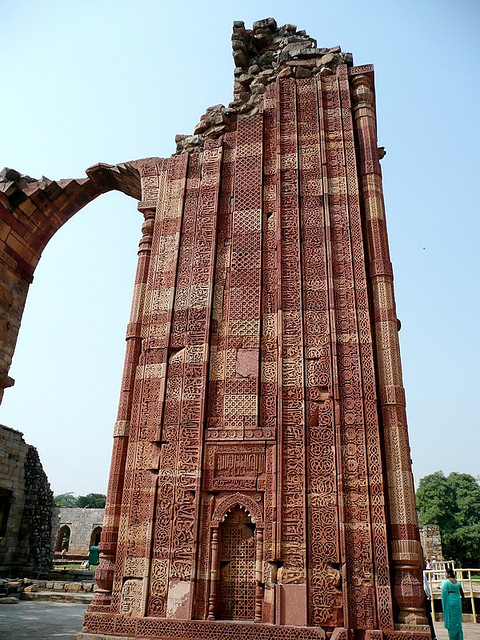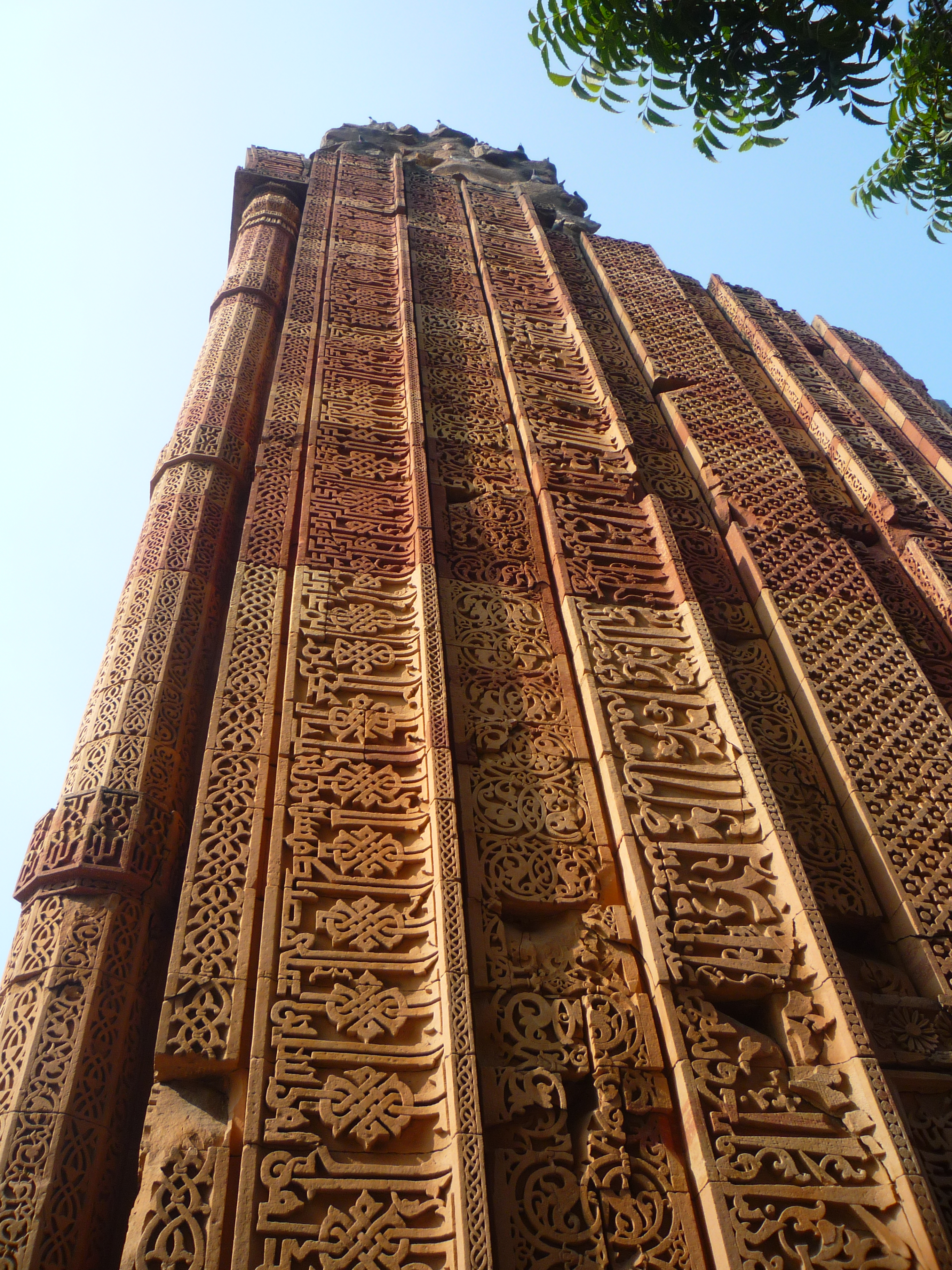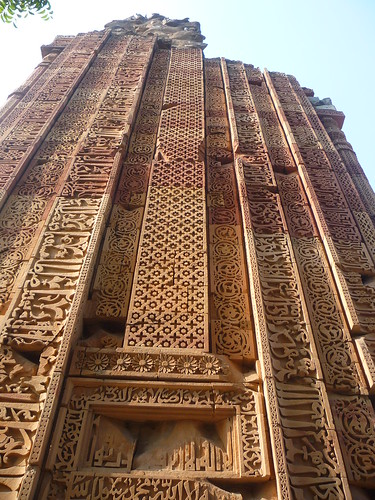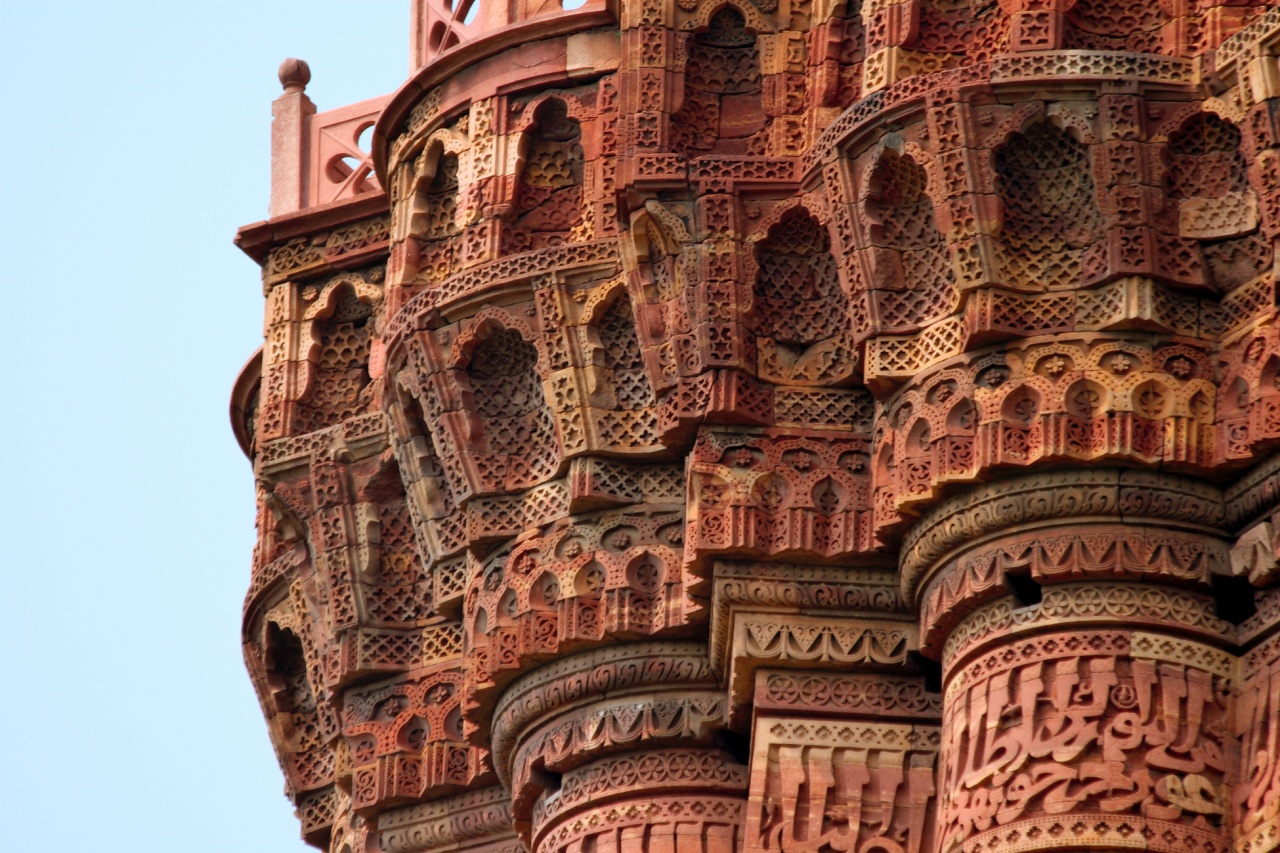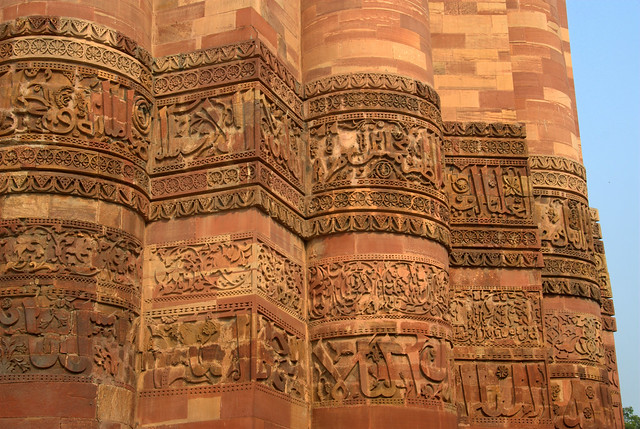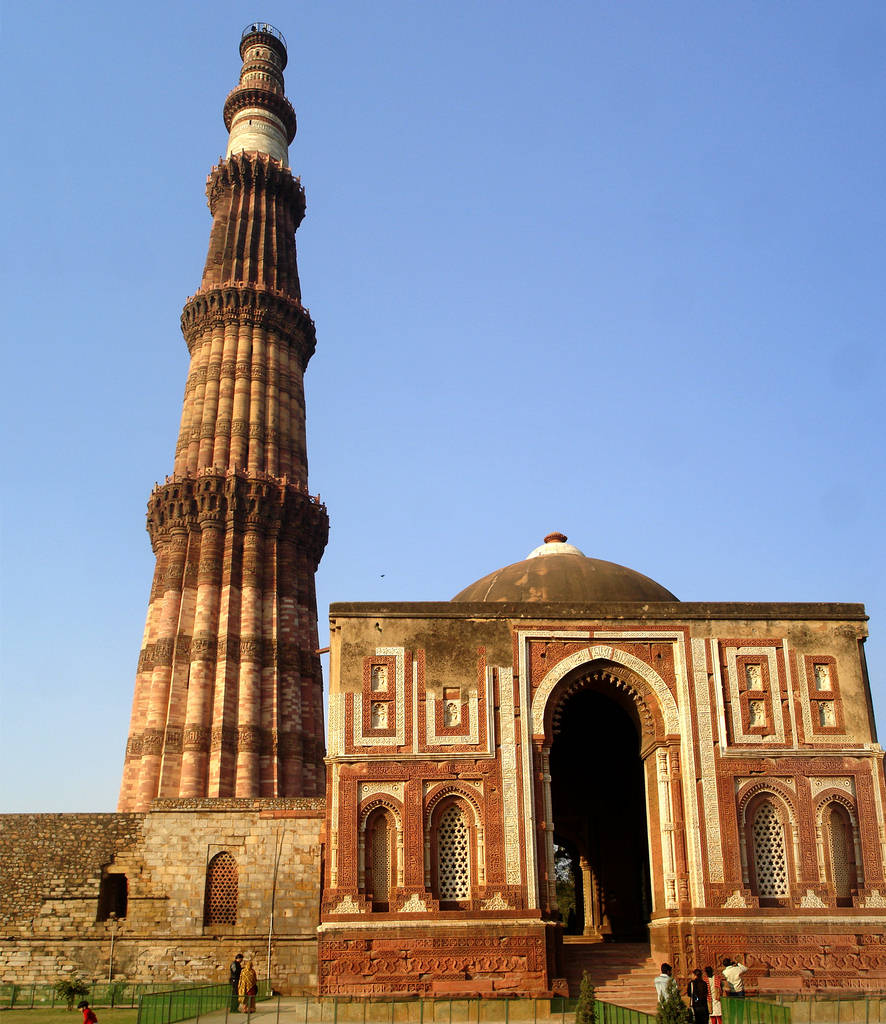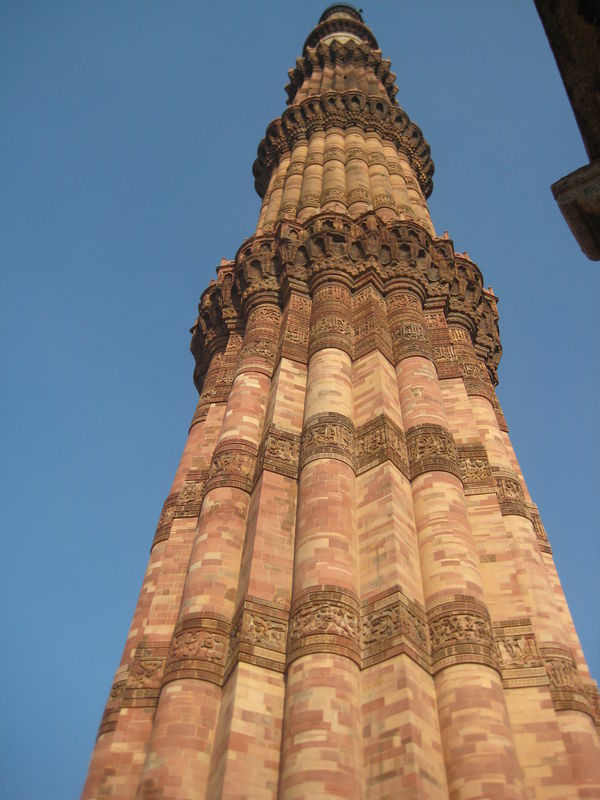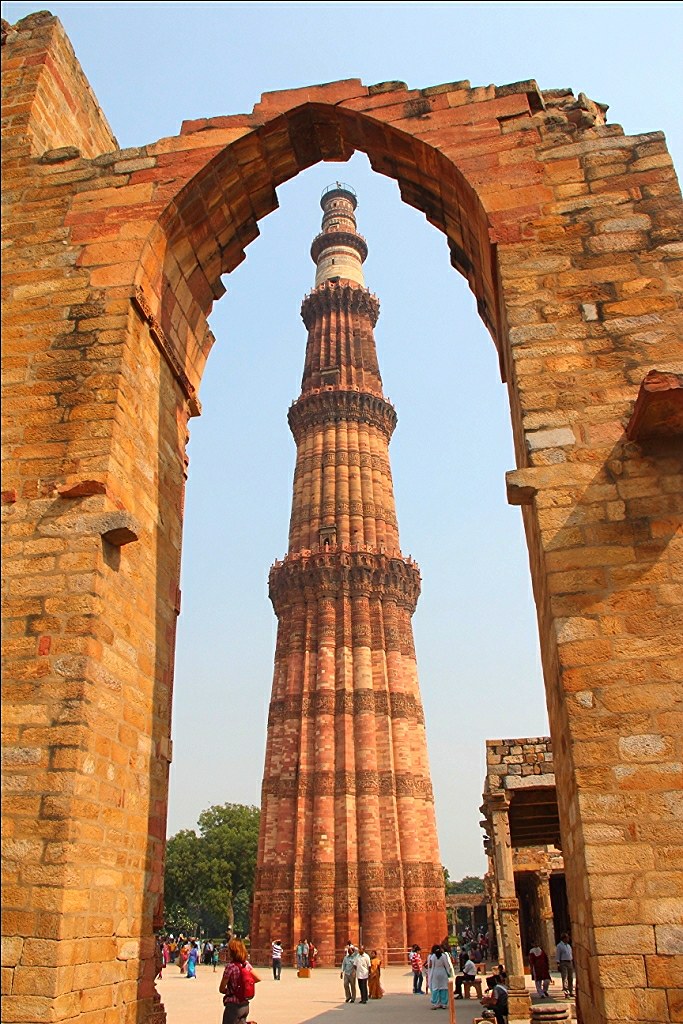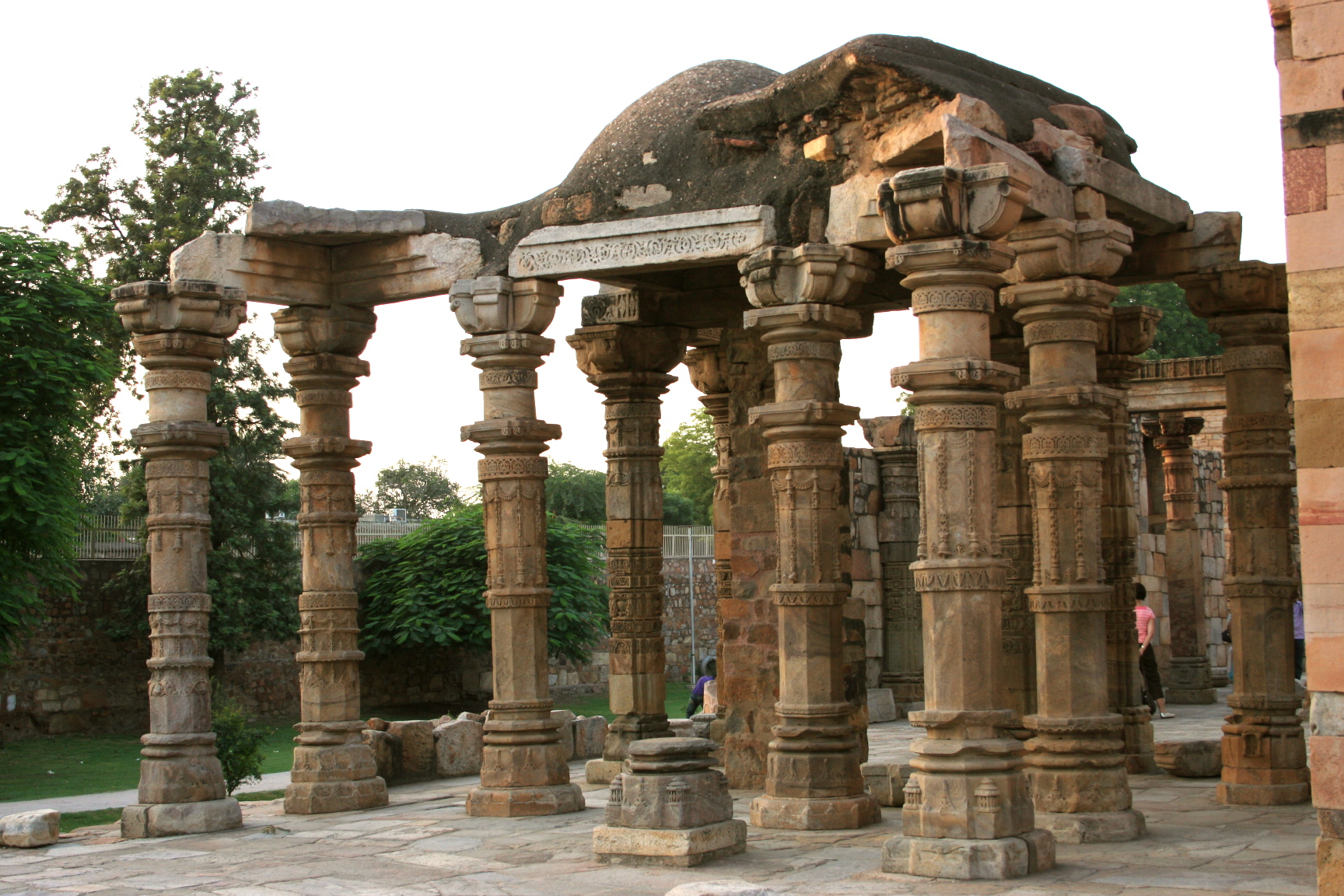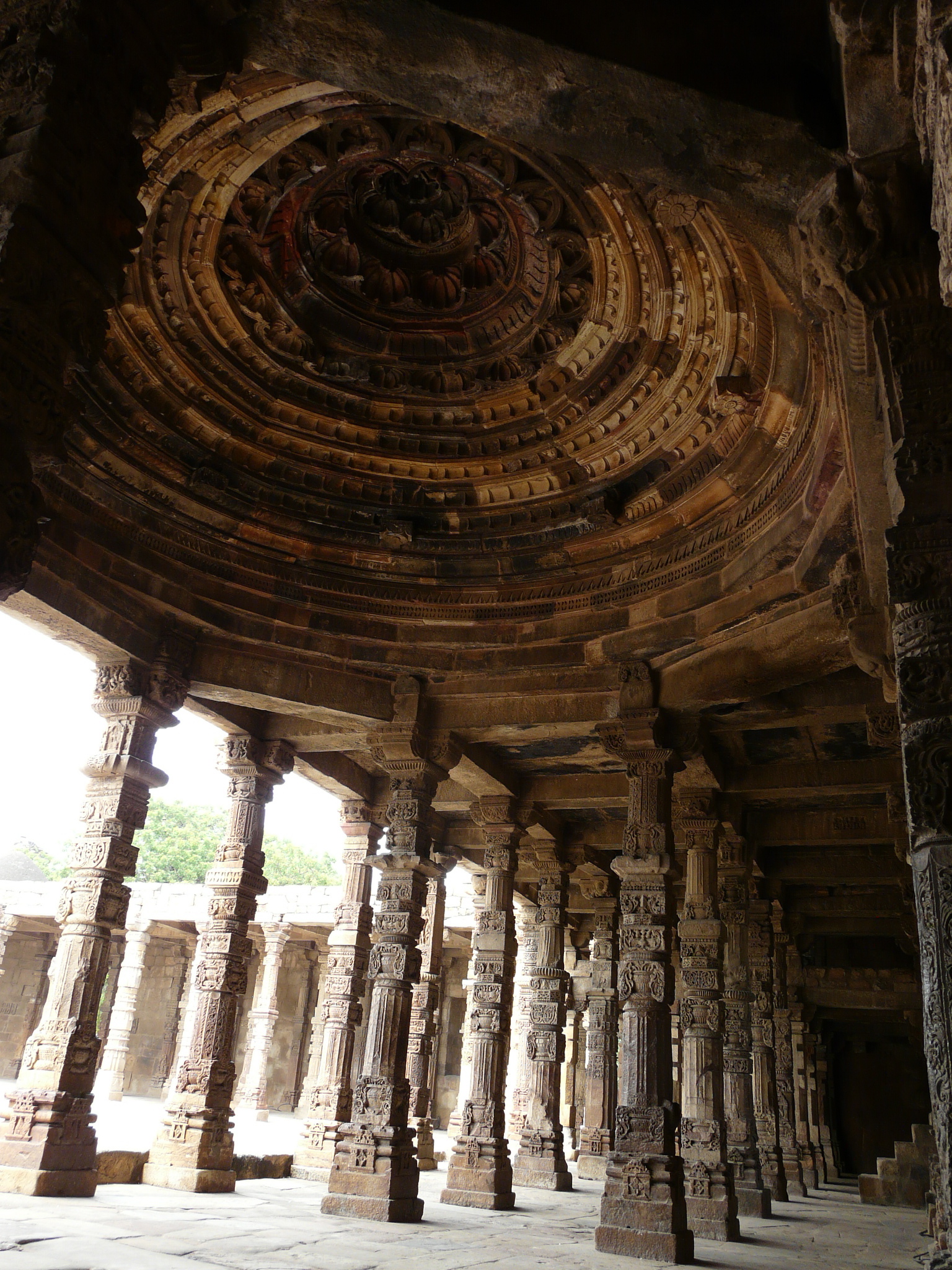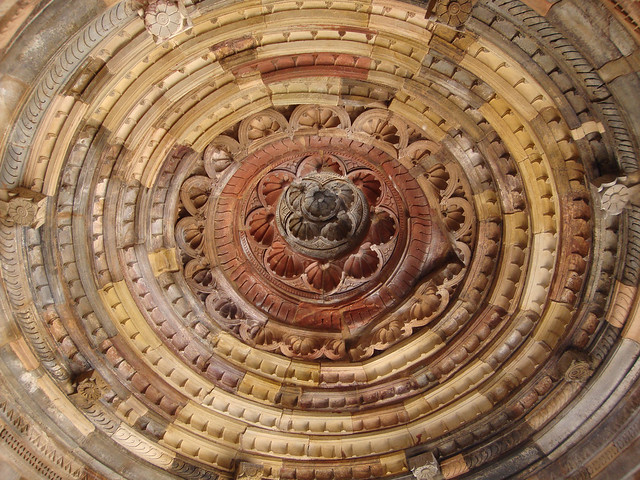


Notice: This is the official website of the All Empires History Community (Reg. 10 Feb 2002)
Indo Islamic architecture of Delhi sultanates |
Post Reply 
|
Page 12> |
| Author | |
Jinit 
Knight 
Joined: 16-Mar-2013 Location: India Online Status: Offline Posts: 86 |
 Quote Quote  Reply Reply
 Topic: Indo Islamic architecture of Delhi sultanates Topic: Indo Islamic architecture of Delhi sultanatesPosted: 08-May-2014 at 09:22 |
Thanks Sufi. When I started this thread I was planning to cover all the five dynasties of Delhi Sultante plus Architecture of Suri dynasty. However I didn't get much time after that, so couldn't finish it. :( Anyway, I have started two another thread on Indian architecture. Hope you will also enjoy it. Edited by Jinit - 08-May-2014 at 10:54 |
|
 |
|
Jinit 
Knight 
Joined: 16-Mar-2013 Location: India Online Status: Offline Posts: 86 |
 Quote Quote  Reply Reply
 Posted: 08-May-2014 at 09:04 Posted: 08-May-2014 at 09:04 |
Indeed, I totally agree with you. Besides Architecture is a good parameter to check the evolution or decadence of the human society at any given point of the time period...
|
|
 |
|
sufi 
Immortal Guard 
Joined: 02-May-2014 Location: india Online Status: Offline Posts: 2 |
 Quote Quote  Reply Reply
 Posted: 02-May-2014 at 22:45 Posted: 02-May-2014 at 22:45 |
|
hi.......i am highly indebted to you for such intense and accurate insight in the architectural pattern of saltnate buildings........it is indeed a very informative topic and a very through treatment by you!! thanks for sharing...........
|
|
 |
|
Centrix Vigilis 
Emperor 
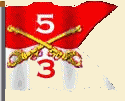
Joined: 18-Aug-2006 Location: The Llano Online Status: Offline Posts: 7392 |
 Quote Quote  Reply Reply
 Posted: 23-Jul-2013 at 20:46 Posted: 23-Jul-2013 at 20:46 |
|
Like much in the ancient era and medieval the building and architecture
no matter the ethnicity or geo region remains beautiful. And I thank Jinit for his pics. |
|
|
"Absence of evidence is not evidence of absence"
S. T. Friedman Pilger's law: 'If it's been officially denied, then it's probably true' |
|
 |
|
Jinit 
Knight 
Joined: 16-Mar-2013 Location: India Online Status: Offline Posts: 86 |
 Quote Quote  Reply Reply
 Posted: 23-Jul-2013 at 19:40 Posted: 23-Jul-2013 at 19:40 |
 |
|
Jinit 
Knight 
Joined: 16-Mar-2013 Location: India Online Status: Offline Posts: 86 |
 Quote Quote  Reply Reply
 Posted: 23-Jul-2013 at 19:39 Posted: 23-Jul-2013 at 19:39 |
 |
|
Jinit 
Knight 
Joined: 16-Mar-2013 Location: India Online Status: Offline Posts: 86 |
 Quote Quote  Reply Reply
 Posted: 23-Jul-2013 at 19:38 Posted: 23-Jul-2013 at 19:38 |
 |
|
Jinit 
Knight 
Joined: 16-Mar-2013 Location: India Online Status: Offline Posts: 86 |
 Quote Quote  Reply Reply
 Posted: 23-Jul-2013 at 19:36 Posted: 23-Jul-2013 at 19:36 |
|
Adhai din ka Jhonpra
Adhai din ka jhonpra (literally meaning Hut for two and a half days) was built by Qutub-ud-din in 1192 AD ( or 1193 AD?) at Ajmer, most probably at the site of ancient Sanskrit college or Jain temple. According to legend it was built in two and a half day when Ghori visited Ajmer. Just like Quwwat-ul-Islam mosque it was also built from the material directly obtained by dismantling the Hindu and Jain temples. However unlike the Quwwat-ul-Islam mosque which was built in haphazard manner, this mosque is built in rather more synchronized manner. Instead of two, three columns of pillars (taken from temples) are put one above another to obtain sufficient height. Later on Facade or screen was added during the reign of Iltutmish. However unlike the screen of Quwwat-ul-Islam mosque which shows more floral and liberal pattern, this one shows mechanical rigid pattern most probably due to religious prohibitions. 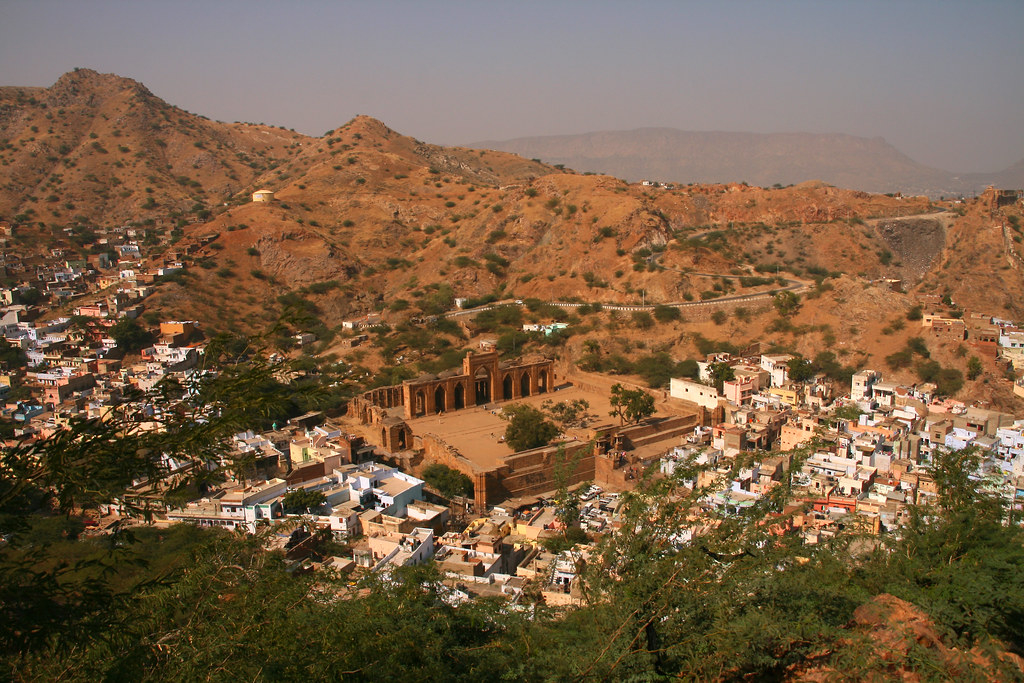 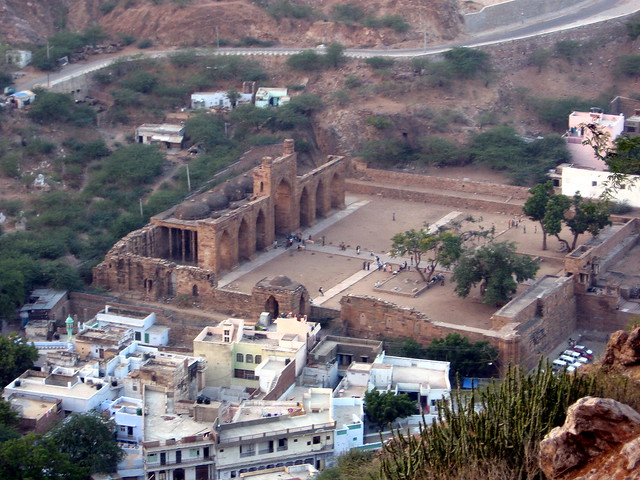 Entrance of the mosque 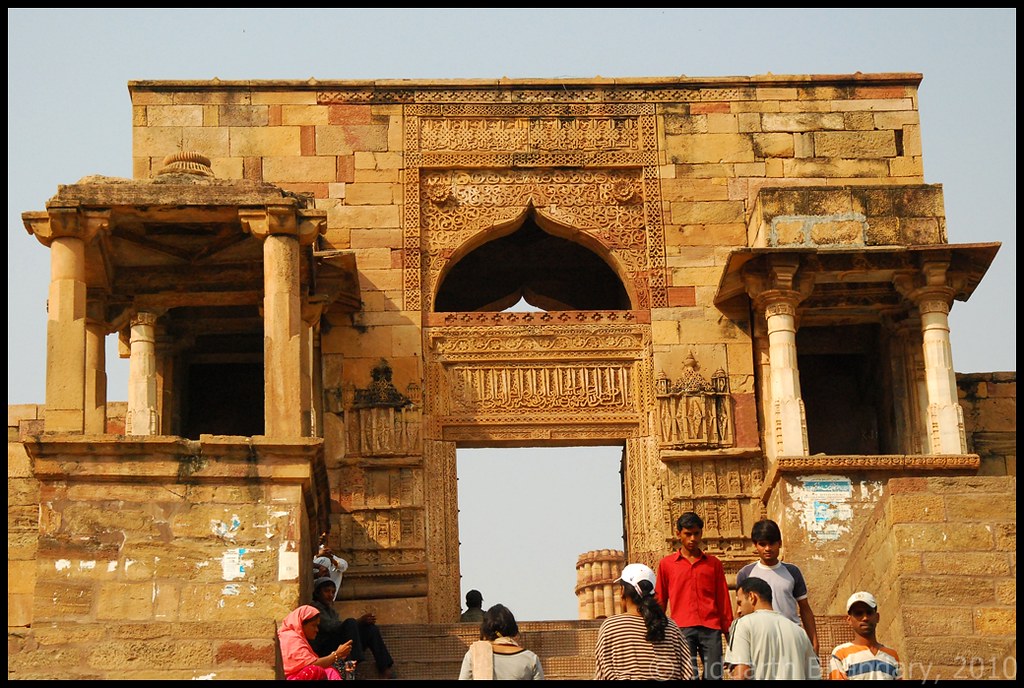 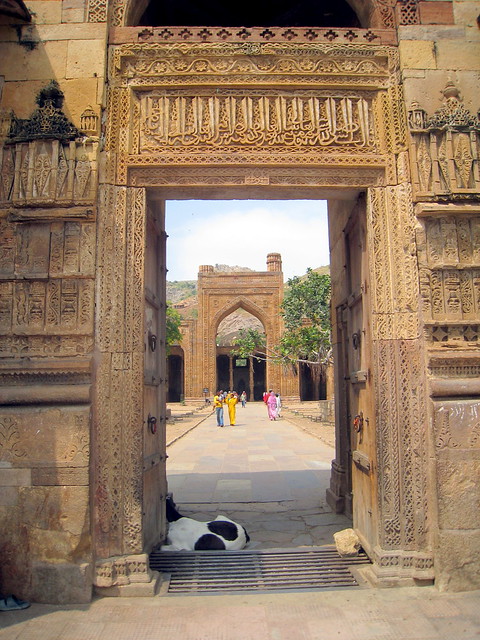 Screen/facade of the mosque. 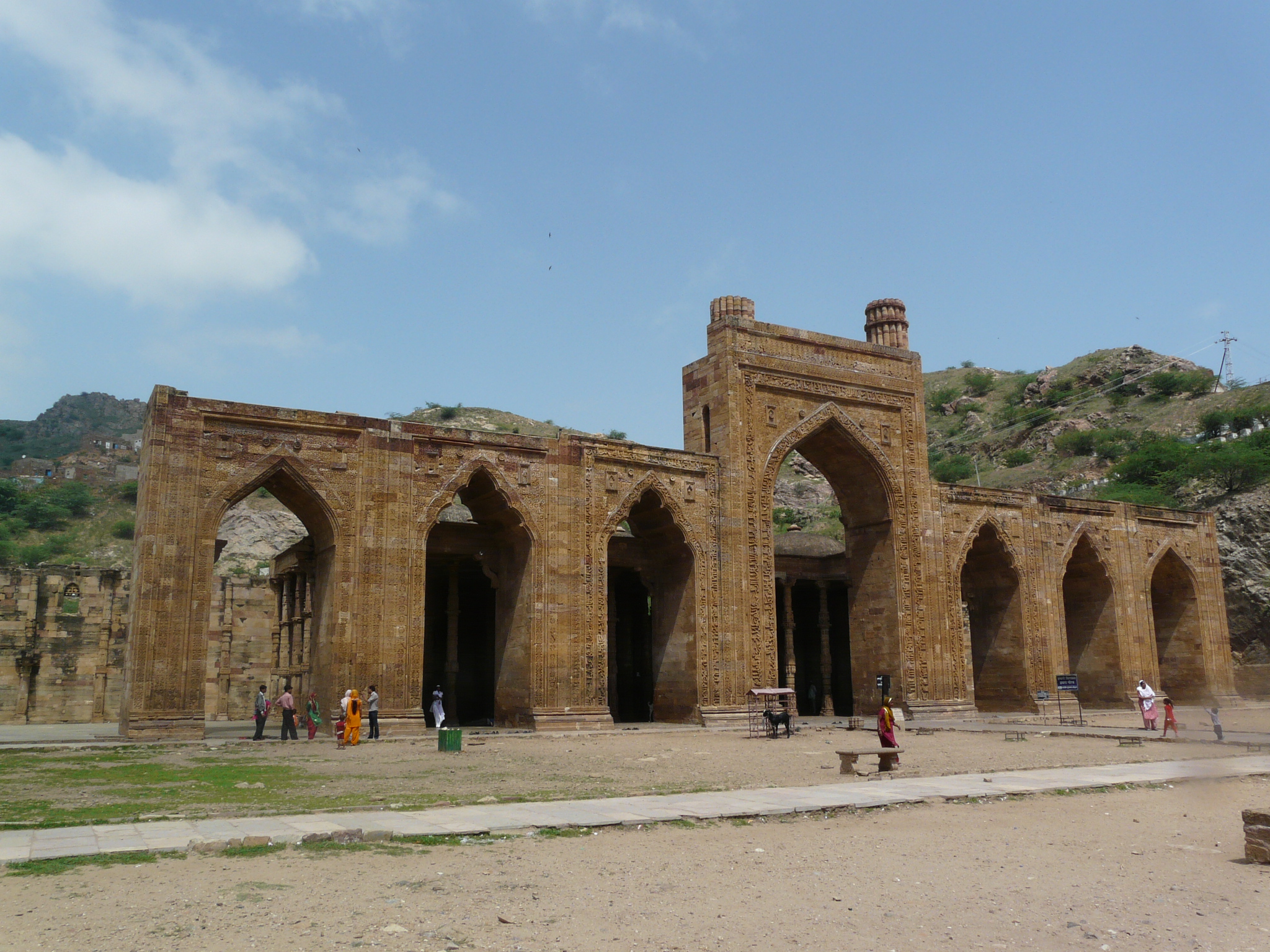 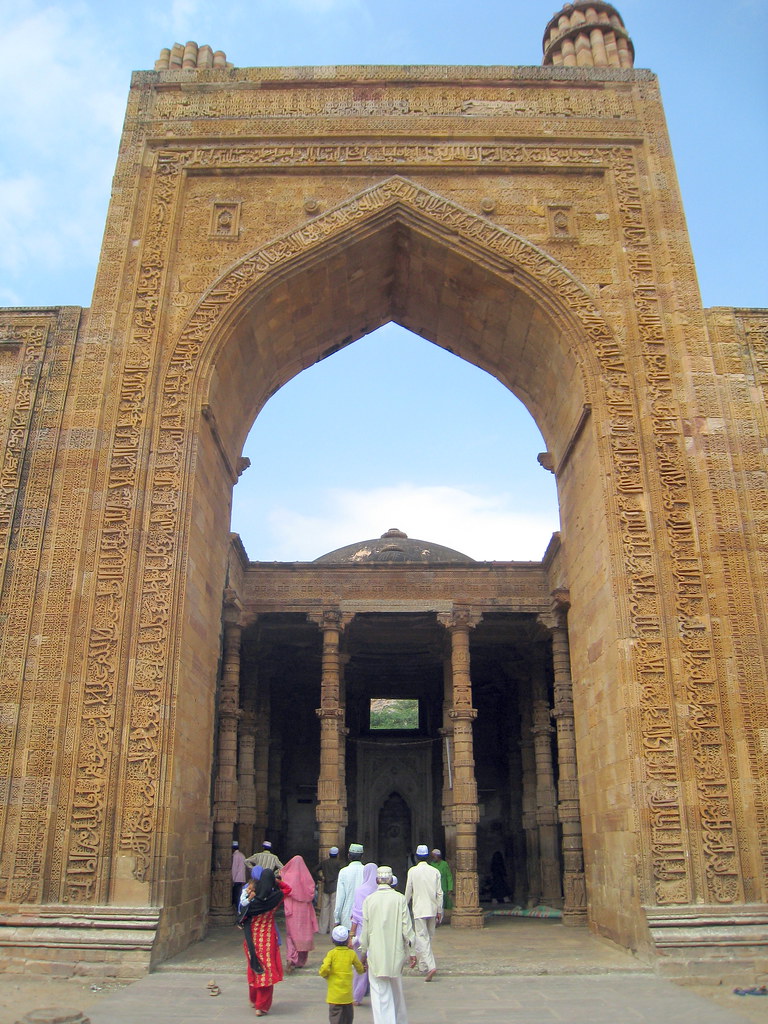 
Edited by Jinit - 23-Jul-2013 at 19:47 |
|
 |
|
Jinit 
Knight 
Joined: 16-Mar-2013 Location: India Online Status: Offline Posts: 86 |
 Quote Quote  Reply Reply
 Posted: 20-Jul-2013 at 20:06 Posted: 20-Jul-2013 at 20:06 |
 |
|
Jinit 
Knight 
Joined: 16-Mar-2013 Location: India Online Status: Offline Posts: 86 |
 Quote Quote  Reply Reply
 Posted: 20-Jul-2013 at 20:05 Posted: 20-Jul-2013 at 20:05 |
 |
|
Jinit 
Knight 
Joined: 16-Mar-2013 Location: India Online Status: Offline Posts: 86 |
 Quote Quote  Reply Reply
 Posted: 20-Jul-2013 at 20:04 Posted: 20-Jul-2013 at 20:04 |
 |
|
Jinit 
Knight 
Joined: 16-Mar-2013 Location: India Online Status: Offline Posts: 86 |
 Quote Quote  Reply Reply
 Posted: 20-Jul-2013 at 20:03 Posted: 20-Jul-2013 at 20:03 |
|
Mausoleum of Iltutmish
Mausoleum of Iltutmish is one of the few Islamic monuments that can actually compete with traditional Hindu temples in terms of rich decoration and ornamentation. The exterior of the mausoleum is relatively plain barring the entrance, a condition not improbably due to most of the outside being left uninished. In contrast the interior is most elaborately decorated. The mausoleum square structure with entrance on the 3 sides, while western side is closed to accommodate 3 beautifully carved mihrabs. Iltutmish's mausoleum is also one of the early if not the first monuments where squinch is added to support a roof. Squinch is basically a mechanism of supporting arches at the corner of the square hall to convert it into circular shape on the upper side so that it can support the circular dome . However the arches used are still the false arches used in the native Indian architecture. However the dome has already collapsed. Exterior of the mausoleum  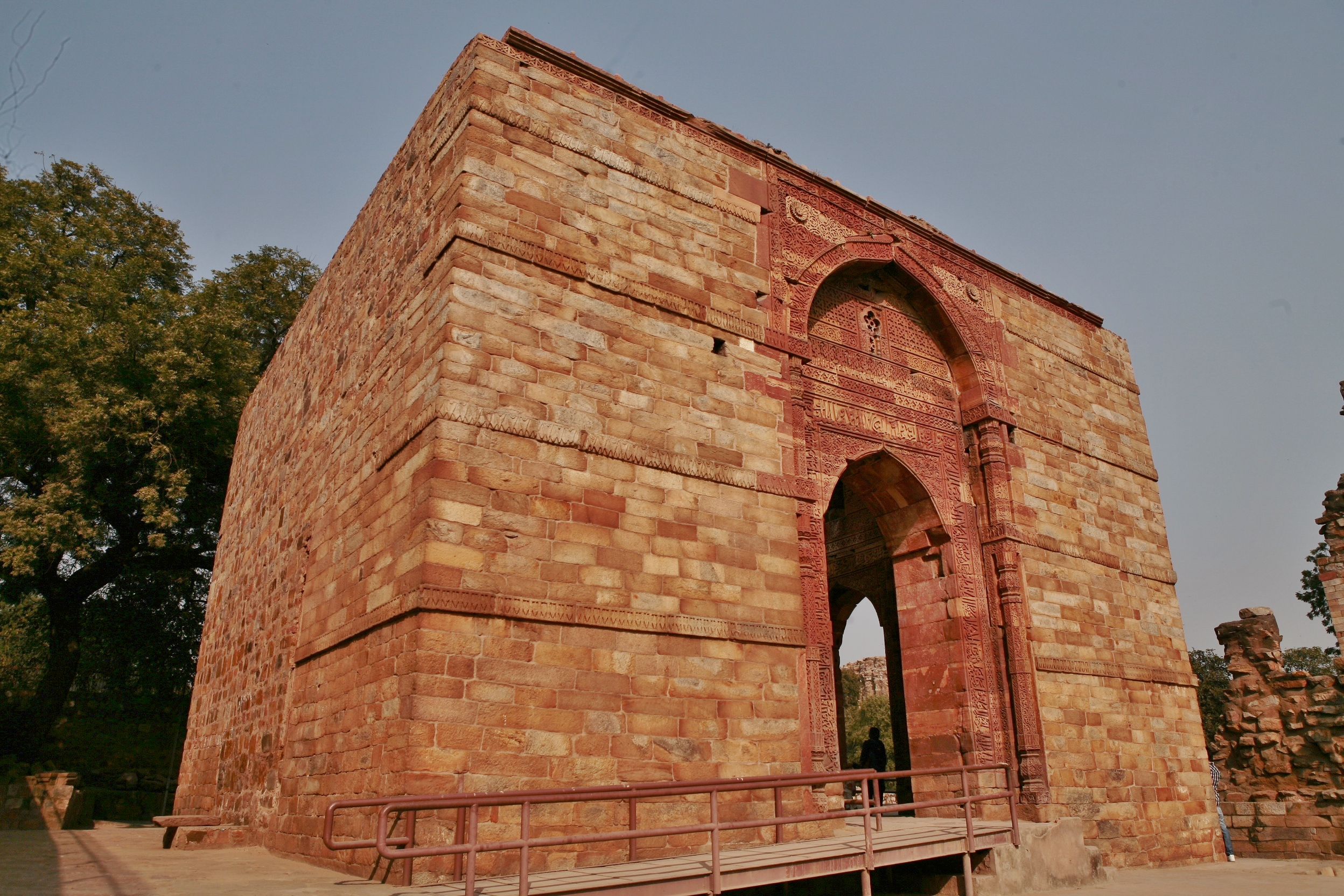 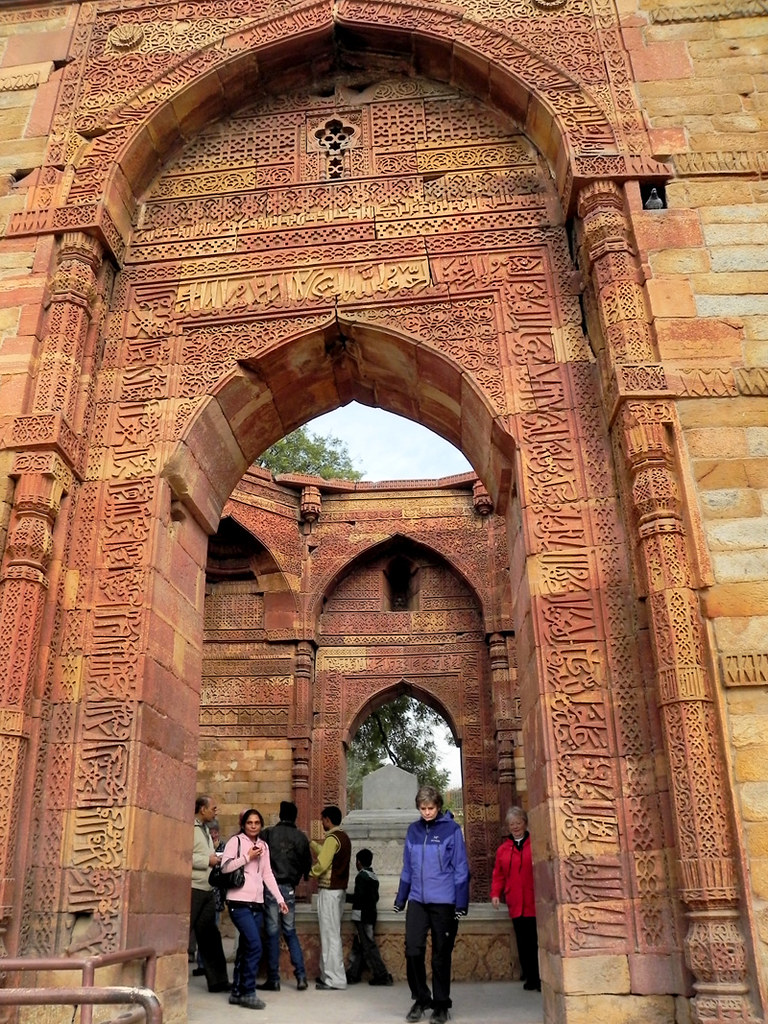  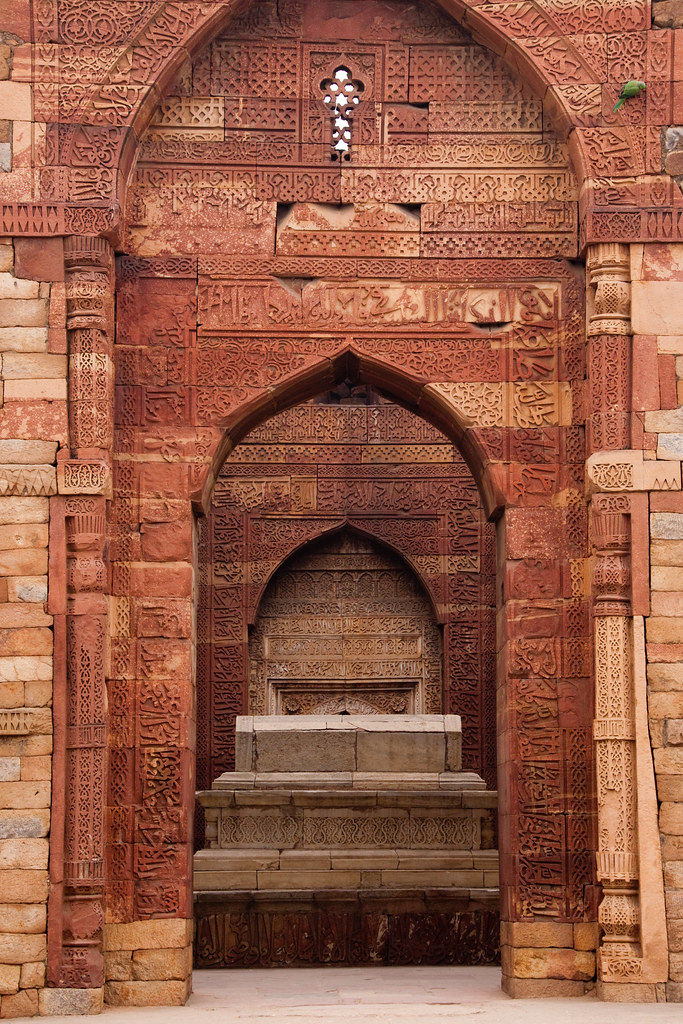
|
|
 |
|
Jinit 
Knight 
Joined: 16-Mar-2013 Location: India Online Status: Offline Posts: 86 |
 Quote Quote  Reply Reply
 Posted: 20-Jul-2013 at 14:31 Posted: 20-Jul-2013 at 14:31 |
 |
|
Jinit 
Knight 
Joined: 16-Mar-2013 Location: India Online Status: Offline Posts: 86 |
 Quote Quote  Reply Reply
 Posted: 20-Jul-2013 at 14:30 Posted: 20-Jul-2013 at 14:30 |
|
Sultan Ghari
Sultan Ghari (Sultan of the cave?) was the first Islamic mausoleum built in Delhi and may be the first one in Indian subcontinent too. It was built in 1231 AD by Iltutmish in memory of his elder son Nasir-ud-din. The mausoleum is unique from the subsequent mausoleums built in India. From the outer look it looks like a military outpost. However aesthetic appearance is given by the use of the marble at the entrance. The tomb is situated beneath the Octagonal platform in the middle of the courtyard. The platform might have been built to support a pyramidal pavilion which either disappeared or was never built to begin with. On the western side of the courtyard a Mihrab is added whose domed ceiling is again similar to those seen in temples.  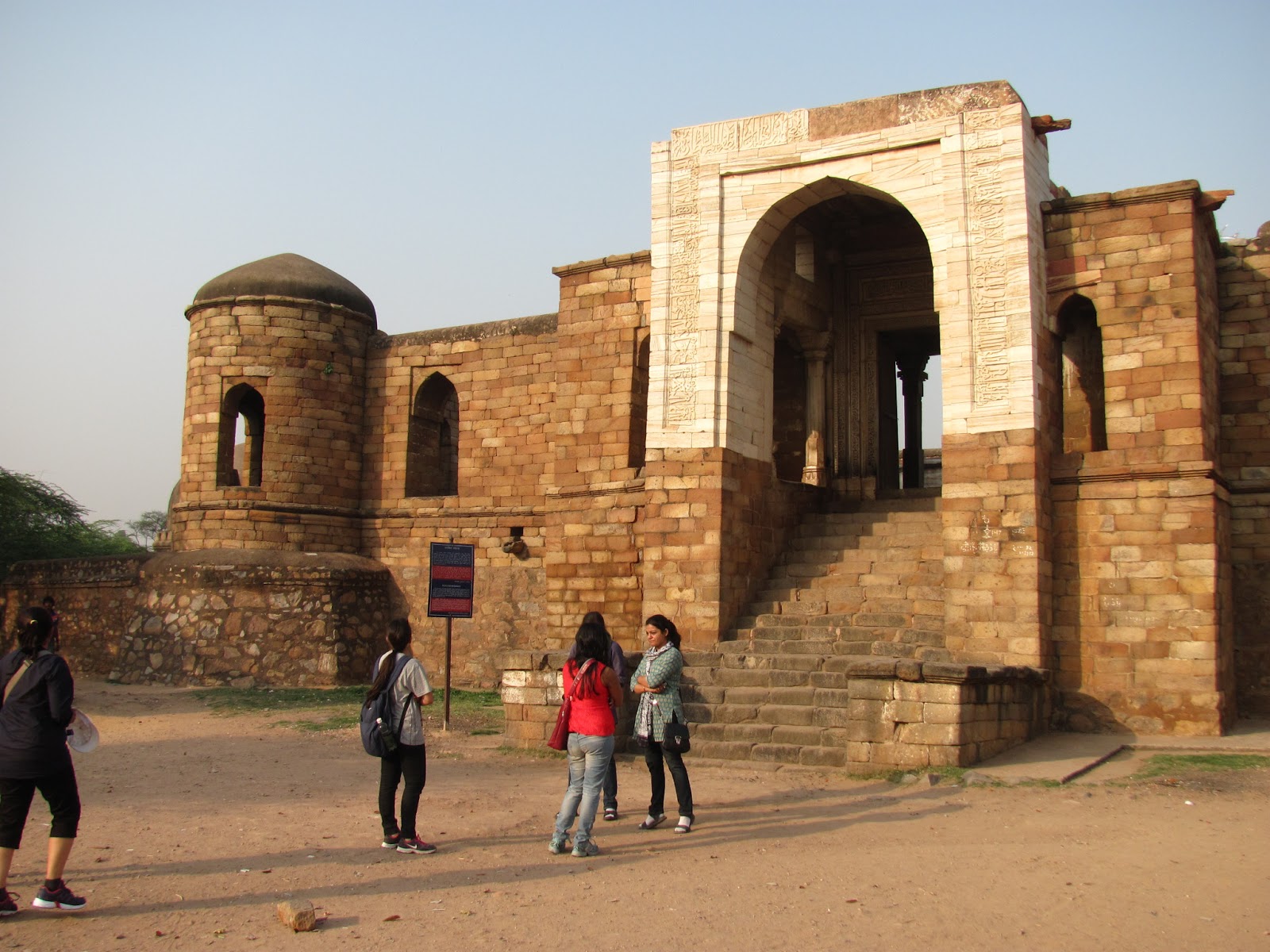 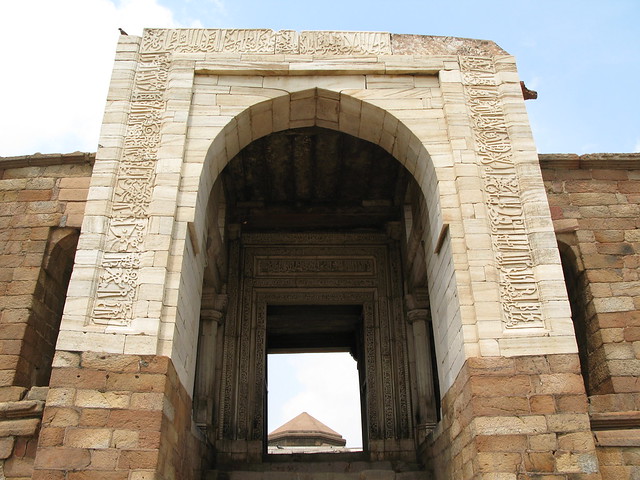 
|
|
 |
|
Jinit 
Knight 
Joined: 16-Mar-2013 Location: India Online Status: Offline Posts: 86 |
 Quote Quote  Reply Reply
 Posted: 20-Jul-2013 at 12:24 Posted: 20-Jul-2013 at 12:24 |
|
Monuments built by Iltutmish
After the death of Qutub-ud-din in 1210 AD his son Aram shah came to the throne. However he was soon overthrown by Shams-ud-din Iltutmish (son-in-law of Qutub-ud-din). Iltutmish supressed internal revolts, regained the lost territories elsewhere in the north India and also secured the border. During his tenure he extended the Quwwat-ul-Islam mosque, added screen/facade to Ajmer mosque just like that of Delhi and built the mausoleum for him and his son Nusur-ud-din. 2nd Expansion of Quwwat-ul-Islam mosque Almost 30 years after the construction of original mosque Iltutmish decided to extend the mosque. However rather than demolishing the original structure, he enveloped the mosque along with Qutub minar into another bigger structure. Original plan of the Qutb complex.  Present day ruins in the complex. 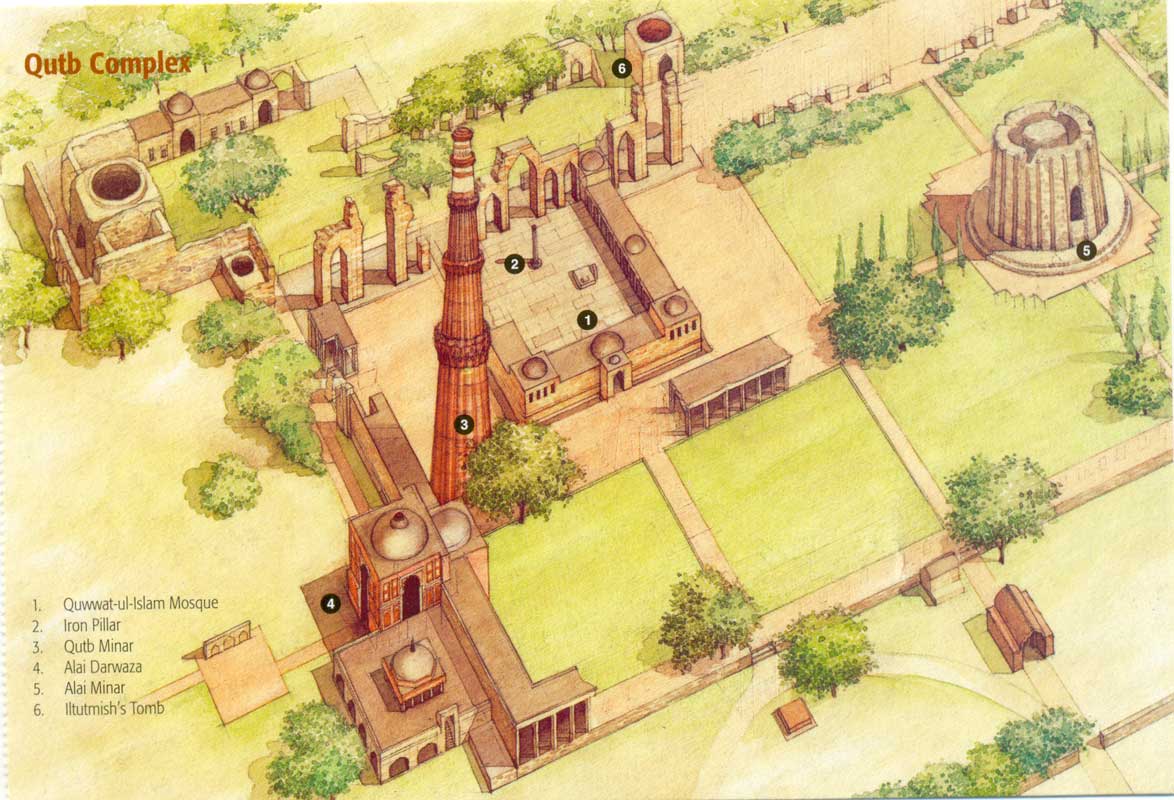 Screen added by Iltutmish on both the sides of the original screen. Edited by Jinit - 20-Jul-2013 at 12:29 |
|
 |
|
Jinit 
Knight 
Joined: 16-Mar-2013 Location: India Online Status: Offline Posts: 86 |
 Quote Quote  Reply Reply
 Posted: 20-Jul-2013 at 08:14 Posted: 20-Jul-2013 at 08:14 |
 |
|
Jinit 
Knight 
Joined: 16-Mar-2013 Location: India Online Status: Offline Posts: 86 |
 Quote Quote  Reply Reply
 Posted: 20-Jul-2013 at 08:12 Posted: 20-Jul-2013 at 08:12 |
|
Qutub Minar
Beyond any doubt Qutub minar is one of the most celebrated monument in the Islamic history of India. The construction of the Qutub minar was started in 1200 AD by Qutub-ud-din as minaret for the Quwwat-ul-Islam mosque for the muezzins to call the Muslims for the prayer. However grandiosity of the minar itself suggests that the minar was constructed to proclaim the prestige of Islam in this part of the world. Qutub-ud-din could finish only the basement of the minar. The rest of the construction was completed by his Son-in-law Iltutmish. Later on the 5th storey was added by the Firoz shah tughlaq in 14th century. The tower was decorated by the bands of the inscriptions and balconies with delicately ornamented supporting brackets. The grandiosity of the tower is the combination of the vision of the slave rulers and creative genius of Indian craftsmen. Seen from any point of view the 20tb Minar as a whole is a most impressive conception, the vivid colour of its red sandstone, the changing texture of its fluted stories with their overlay of inscriptional bands, the contrast between the alternating spaces of plain masonry and rich carving, the shimmer of the shadows under the balconies, all combine to produce an effect of marked vitality.... - Percy brown |
|
 |
|
Jinit 
Knight 
Joined: 16-Mar-2013 Location: India Online Status: Offline Posts: 86 |
 Quote Quote  Reply Reply
 Posted: 20-Jul-2013 at 06:04 Posted: 20-Jul-2013 at 06:04 |
|
On the side note: the Iron pillar in the center of mosque is another wonder of India. Originally It was erected by Chandragupta II in 5th century (most probably in Vidish by wiki article.). It was brought to Delhi as a war trophy from some other place by the Mamluk rulers. The pillar is the testament to the high skill of ancient Indian metallurgists. The pillar is in intact condition even after more than 1500 years!!!
for further information: |
|
 |
|
Jinit 
Knight 
Joined: 16-Mar-2013 Location: India Online Status: Offline Posts: 86 |
 Quote Quote  Reply Reply
 Posted: 20-Jul-2013 at 05:47 Posted: 20-Jul-2013 at 05:47 |
|
An arched facade or screen was added to the mosque after two years on the western side of the mosque, infront of the sanctuary to give it more authentic look. From the construction of the arches it is obvious that it is done by the same native artisans who once produced those magnificent temples which were demolished to get material for the mosque.
 this view is further reinforced by the beautiful floral carvings on the facades which are basically Hindu conception (and interestingly in total contrast with the upright lines of decorative Quranic inscriptions which are basically an Islamic conception. this view is further reinforced by the beautiful floral carvings on the facades which are basically Hindu conception (and interestingly in total contrast with the upright lines of decorative Quranic inscriptions which are basically an Islamic conception.  ) )Originally there was one central arch surrounded by 2 small side arches on each side. there must be small arches above the side arches when originally built. 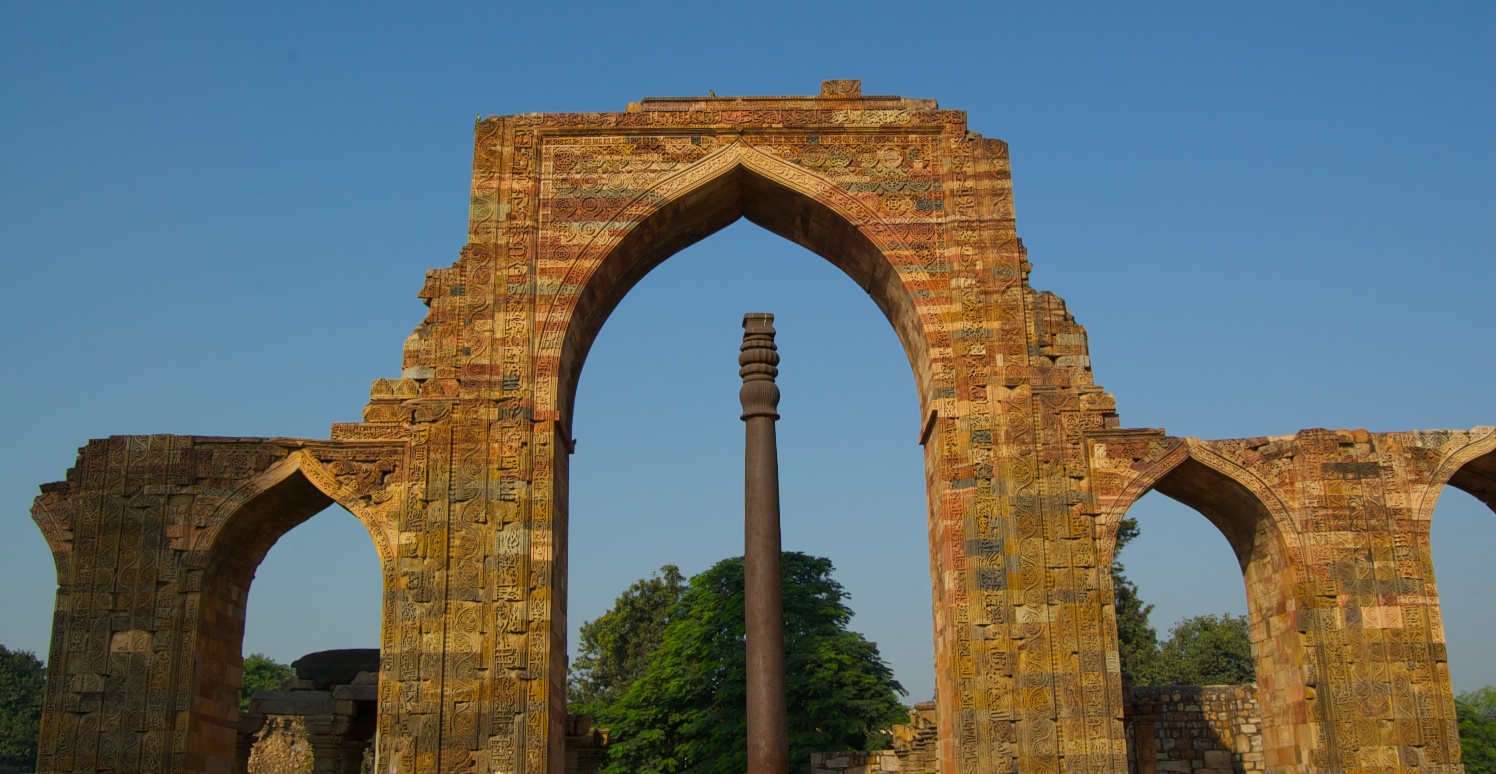  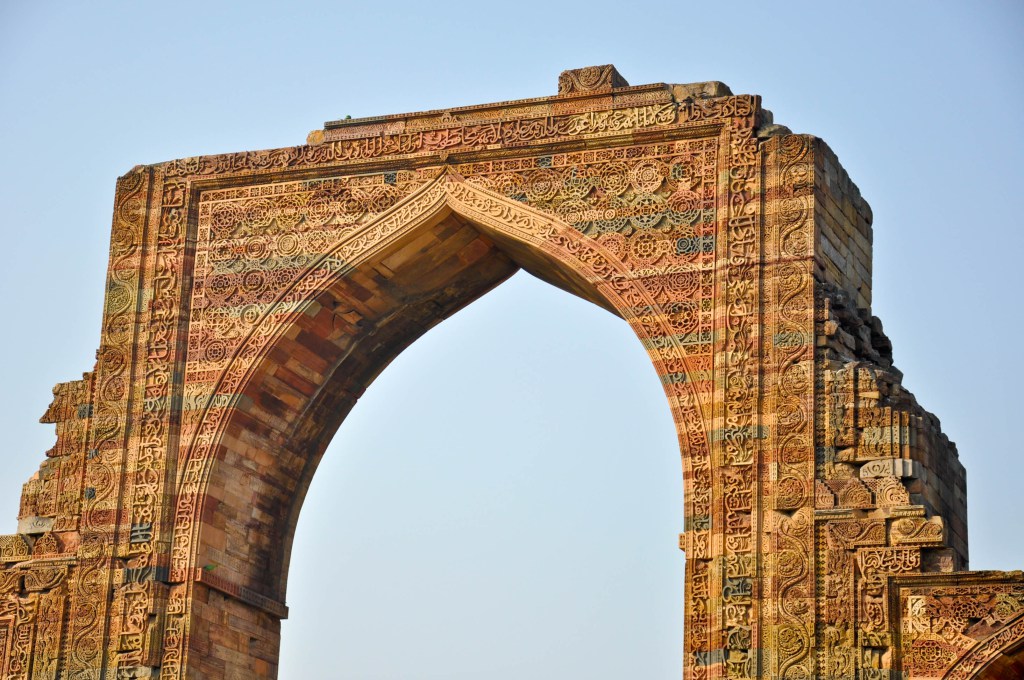 As written by contemporary historian, "and upon the surface of the stones were engraved verses of Quran in such manner as could not be done on wax, ascending so high that you would think that Quran was going up in heave and again descending in another line so low that you would think it was coming down from heaven" 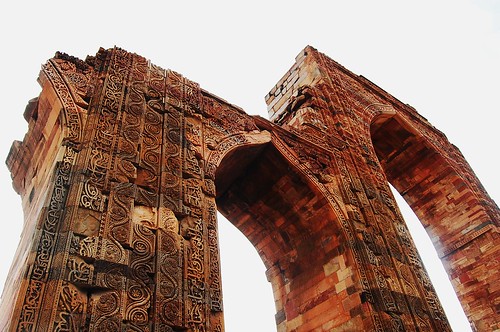  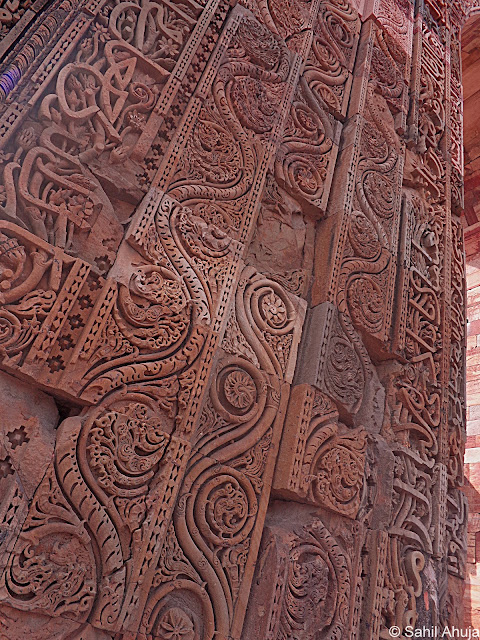 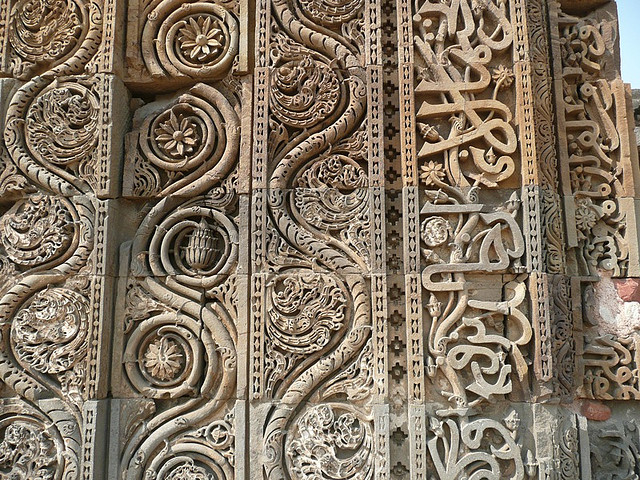  Also comapre this liberal flowing floral carvings with the another carvings done during the reign of Illtutmish when the mosque was extended. The floral pattern is replaced by more rigid pattern most probably because of the Religious reasons. Yet it still looks amazing. 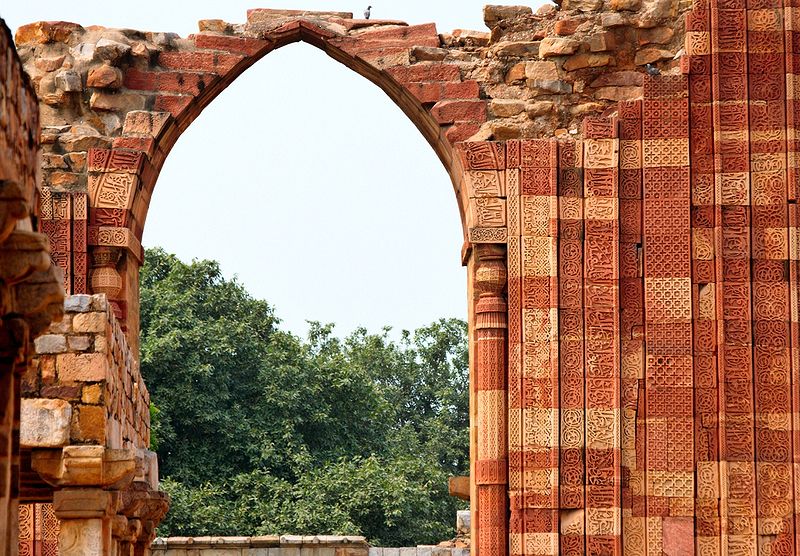 Edited by Jinit - 20-Jul-2013 at 06:01 |
|
 |
|
Jinit 
Knight 
Joined: 16-Mar-2013 Location: India Online Status: Offline Posts: 86 |
 Quote Quote  Reply Reply
 Posted: 20-Jul-2013 at 05:46 Posted: 20-Jul-2013 at 05:46 |
 |
|
Post Reply 
|
Page 12> |
| Forum Jump | Forum Permissions  You cannot post new topics in this forum You cannot reply to topics in this forum You cannot delete your posts in this forum You cannot edit your posts in this forum You cannot create polls in this forum You cannot vote in polls in this forum |
Bulletin Board Software by Web Wiz Forums® version 9.56a [Free Express Edition]
Copyright ©2001-2009 Web Wiz
This page was generated in 0.110 seconds.
Copyright ©2001-2009 Web Wiz
This page was generated in 0.110 seconds.












 Printable Version
Printable Version Google
Google Delicious
Delicious Digg
Digg StumbleUpon
StumbleUpon Windows Live
Windows Live Yahoo Bookmarks
Yahoo Bookmarks reddit
reddit Facebook
Facebook MySpace
MySpace Newsvine
Newsvine Furl
Furl Topic Options
Topic Options